Anime Versus Cancel Culture
Earlier this year, western viewers attempted to cancel Miss Kobayashi’s Dragon Maid’s second season. These calls for cancellation were almost entirely ignored by the fan base and producers of the show. The events similarly unfolded, like the cancellation attempts for Uzaki-chan wants to hang out and Don’t toy with me Miss Nagatoro. These cancellation attempts of all three shows were based on the belief that they were trying to normalize pedophilia. In the case of Nagatoro, it additionally got accused of whitewashing.
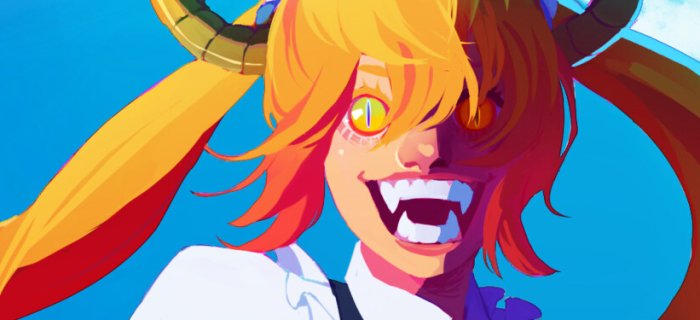
In this article, Miss Kobayashi’s Dragon Maid will be the main focus. While most of the analysis is about criticism directed at Dragon Maid, other content deemed offensive and some inoffensive content will become a part of the discussion when relevant. The purpose of this is to give a clear picture of how cancel culture is practiced, its effects on society, and whether or not it has any practical applications. At the end of this, there will be an examination of the facts to see if offensive content has any value or is detrimental to society.
Before any critiquing of Miss Kobayashi’s Dragon Maid or other offensive content can occur in relation to cancel culture. There must be an agreed-upon definition for what cancel culture and the terms related to it are. As the words associated with it have nebulous definitions that vary from person to person. There also must be an examination of cancel culture’s effect on society. Only then can Miss Kobayashi’s Dragon Maid be fairly critiqued with in cancel culture. Thus proving or disproving the claims made against such content.
Mature content warning
This article will be discussing subjects of excessive violence, pedophilia, racism, rape, sexualization of minors, and sexual abuse. If any of these topics offend you, it is advised you do not read this. But if you choose to read this, please read what is being written carefully. Also, do not harass anyone mentioned in this article. It is okay to offer criticism, but it is never acceptable behavior to harass anyone. We are all entitled to freedom of expression; whether or not others agree with that expression is an entirely different subject.
About the sources
While none of the links attached to this article will lead to pornographic sites, most will discuss sensitive topics. The disclaimer in the previous paragraph applies to all links in this article. It should be further noted that one site will discuss mangaka’s who have drawn/written hentai doujinshi. (This is self-published pornographic comics/manga.) The images in that link are censored but may still offend some people. This is because despite being censored, they are still sexually suggestive. When that link comes up, there will be an additional warning.
Definitions/explanations
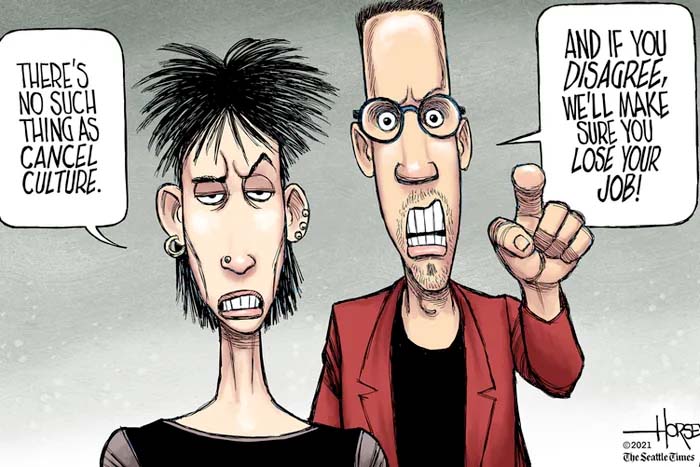
What is cancel culture?
Cancel culture, according to dictionary.com, is
the popular practice of withdrawing support for (canceling) public figures and companies after they have done or said something considered objectionable or offensive. Cancel culture is generally discussed as being performed on social media in the form of group shaming.
(Dictionary.com)
Many that identify politically as progressive claim cancel culture does not exist. Critics of progressives claim that progressives fear that if cancel culture were defined, conservative-leaning politicians could use it against them.
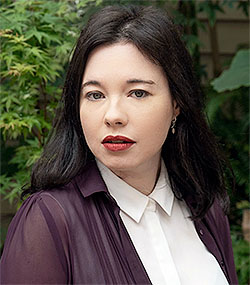
A friend of mine named it the beast for this fear that we all live under but don’t acknowledge. And over the last few years, I have had so many of my colleagues, all of them women, people of color, trans people, queer people, or some combination of the above voice to me the constant anxiety that they live with about maybe saying something wrong that will get them on the wrong side of their communities. Every thought is a hostage situation. Is this the tweet that is going to sink me? So, what do we call it? What is the name for this unspoken, unacknowledged culture of fear where we all know one misstep can ruin our lives?
(Lindsay Ellis, Lindsay Ellis Canceled YouTube video)
For the sake of this article, cancel culture will be defined as the former and not the latter. This is due to the first definition being more concrete.
The reality of cancel culture
Supporters of cancel culture believe that the practice of canceling offensive content is the appropriate response to it. They believe by doing this, they can protect society from dangerous ideas and hold bad actors accountable for their misdeeds. But, despite these claims, it is rarely the case. Critics of cancel culture often see it as uninformed individuals on the internet just virtue signaling. This is because cancel culture will usually unintentionally or intentionally misrepresent information about the subject. The reason this happens is most are reacting to a post found on Twitter or Facebook. These posts rarely have all the information. But, even when the information is represented accurately, few actions are taken by the online community to punish or change the situation, aside from online harassment. This has led to them being accused of slacktivism.
What is slacktivism?
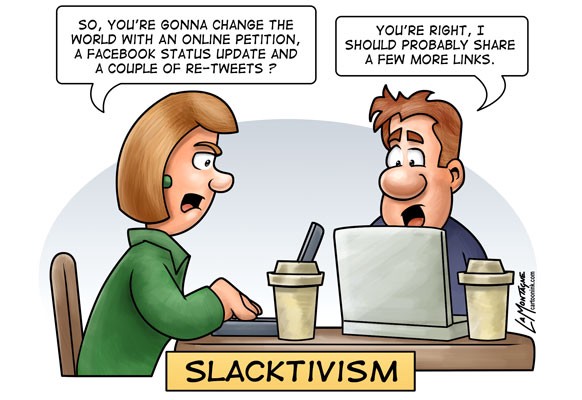
The United Nations defines slacktivism as “when people support a cause by performing simple measures but are not necessarily engaged or devoted to making a change.” Due to how social media works, it is easy for people to passively engage with social issues. Instead of taking real action against societal problems, some may merely show support by changing their profile picture, tweeting out support, or donating some money to a charity. These actions do not harm the causes, but they take little effort. And except for donations, they have no tangible effect on the issues. (While the impact of donations is more quantifiable than other actions, it is not always a positive one. When not scrutinized closely enough, donations can be misused. There have been multiple organizations such as the Trump foundation that used donations for personal benefits and not the cause they advocated for.) This is why most who engage in this practice are accused of virtue signaling.
What is virtue signaling?
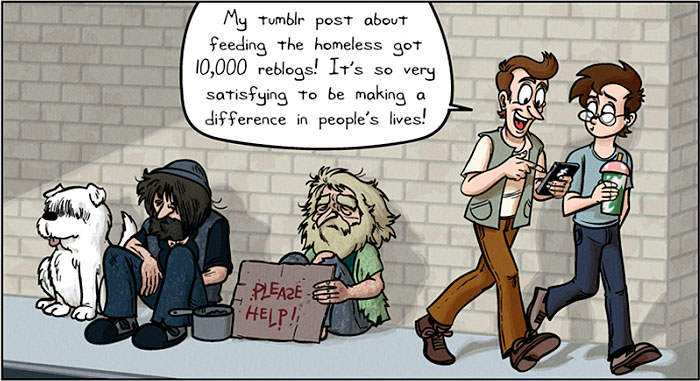
Virtue signaling “is the popular modern habit of indicating that one has virtue merely by expressing disgust or favor for certain political ideas or cultural happenings.” Many critics take issue with this, as they believe it leads to less “foot-on-the-ground change, and that it oversimplifies complex global problems.” Many who engage in this practice will say that they are spreading the message to a larger audience. This allows individuals who have the power or expertise to enact social change. Activist Micah White (Credited for founding the Occupy Wall Street Movement) completely disagrees with this sentiment.
Gone is faith in the power of ideas, or the poetry of deeds, to enact social change. Instead, subject lines are A/B tested and messages vetted for widest appeal. (…) Political engagement becomes a matter of clicking a few links. In promoting the illusion that surfing the web can change the world, clicktivism is to activism as McDonald’s is to a slow-cooked meal. It may look like food, but the life-giving nutrients are long gone.
(Citzenlab, Slacktivism)
There are many examples of individuals promoting a message while ultimately accomplishing nothing due to their lack of engagement with the issues. This is different from someone who takes actual actions in the pursuit of change but fails. An excellent example of slacktivism is the clap for medical staff movement (CFMS), which started during the Covid 19 pandemic.
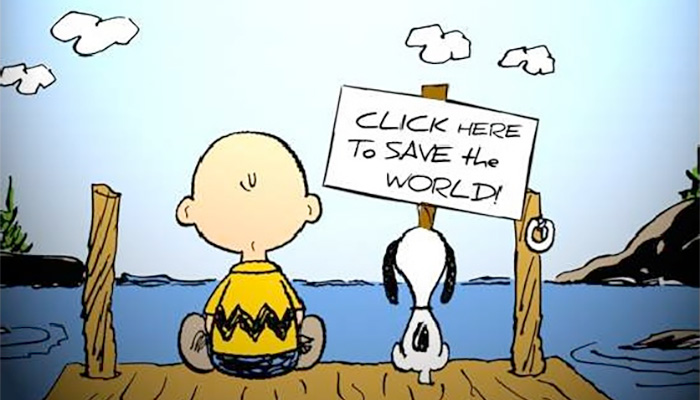
It is questionable if the CFMS movement had any impact on the pandemic. Despite its intentions for change, there are no tangible differences that activists can point to. Many believe this is because the people who supported the movement took no action to help essential workers. They merely offered emotional support. While emotional support can potentially uplift someone spiritually, what workers needed was financial and physical support. This support either never came or it arrived too late for many. This led to the deaths of many doctors and mandatory workers.
by cheering martial metaphor without providing protection and payment, we are asking for martyrdom, not heroism—insensible, unnecessary martyrdom, a death caused by the miserliness of capital, the dysfunction of government, the failure of a state so comprehensive it staggers the mind.” The people risking their lives to care for our sick and vulnerable or keep our supermarkets open don’t need an applause: they need funding, protection, and compensation.
(Citzenlab, Slacktivism)
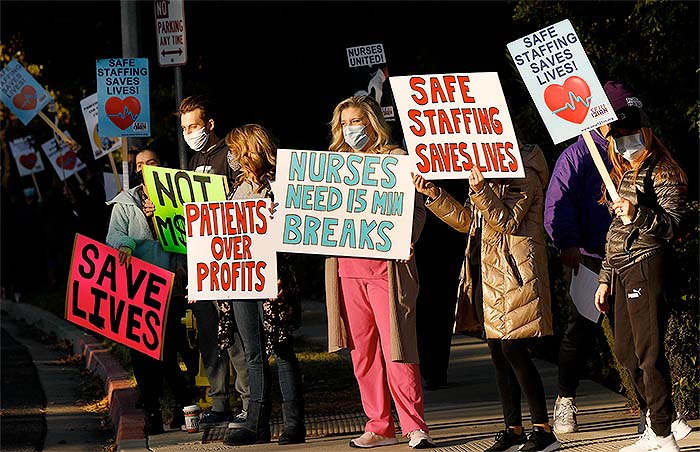
Had the words (or clapping in this case) of those supporting the CFMS movement translated into actual legislation or financial support, this might be a different story. But not only did their words go ignored by current government officials. They failed to get enough voters to the polls to vote in people who would support their cause. This may be because they did not have a clear political agenda. Due to the group’s general ignorance of politics, they unknowingly campaigned for people who took action against their cause. It is also unclear if they raised any money to support pandemic workers. They essentially did nothing but point out a social failing. Acknowledging social issues should be the start of social movements. But social movements also need action. Otherwise, they are nothing but talk.
This does not mean social movements cannot start on social media. Nor does this mean everyone who engages on these platforms never engages in actual activism. We have proof of this in the examples of the ALS, BLM, and Me Too movements. (These movements also have their own issues but are considered successful.) Social media should be seen as a tool. Whether it is used to the benefit or detriment of society is dependent on how it is applied.
Cancel culture’s effect on society
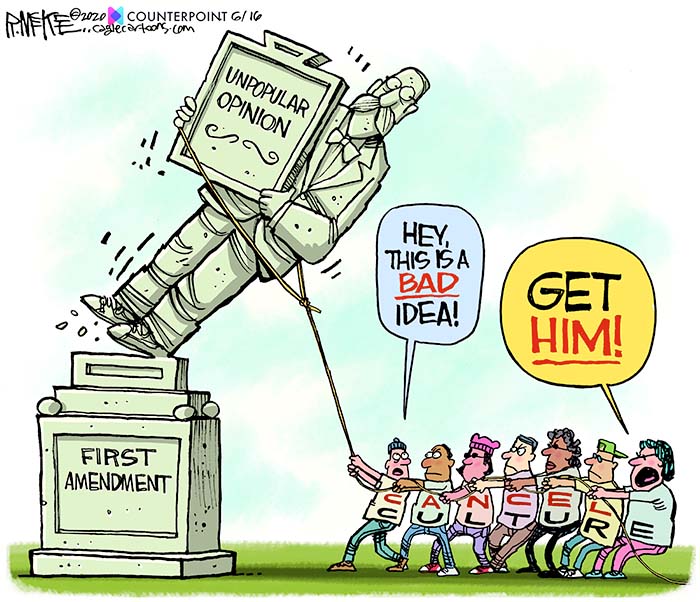
Why we should be concerned about cancel culture
While movements like Me Too did find some success, its path to it was more analogous to winning the lottery. The movement started on Twitter in 2006 when Tarana Burke (currently has 157k followers) began using the hashtag to talk about sexual assault. It did not become popular with the general public until Alyssa Milano (currently has 3.6milliion followers) tweeted it in response to the Harvey Weinstein allegations in 2017. Most tweets or Facebook posts will get buried unless backed by someone with a large following like Milano. Some can go viral, but it is sporadic. Tarana Burke admits that cancel culture is not sustainable for the Me Too movement in a BBC interview. In her interview, “What Tarana sees as a victory for Me Too is helping people not blame themselves for sexual violence committed against them and lead fuller lives.” (Gurvinder Gill, Me Too founder Tarana Burke: Movement is not over) But there are additional problems with cancel culture besides getting the message out to an audience.
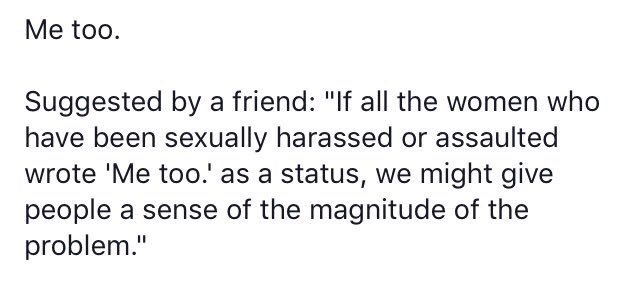
Due process
The biggest problem with cancel culture is it has more in common with an angry mob. Instead of having a system to investigate claims of wrong doing, supporters of cancel culture rely on others to provide them with information. This information is funneled through social media with no filter or fact-checking. The people online then use this unverified information to call for boycotting or removal of individuals. They do this before even confirming if the information is accurate. What this has led to is an environment where people are guilty until proven innocent.

This has been seen in both of David Silverman’s sexual assault allegations. In both instances, David Silverman was fired from his job before any formal investigation could be concluded. Both the sexual encounter and physical touching incident were found to be consensual. While certain aspects of Silverman’s conduct could be considered unbecoming for his position, he did not assault or rape any of the women in these incidents. Yet, the damage was already done. Even after being cleared of both charges, Silverman struggled to find work because the damage to his reputation left him ostracized from society. (Another example of false accusations people probably are more familiar with is ProJared’s child grooming allegations. These allegations were proven false.)
Jordan Peterson, in his interview with Helen Lewis, expresses concern for this cultural shift.

There is no shortage of evidence for reprehensible sexual behavior on the part of people who can use power to get away with it. So, that’s not so good. The Me Too movement, I suspect it probably did some good things and some terrible things. So I would say there is a dangerous proclivity to abandon the concept of presumption of innocence. So in University campuses, for example, we’re moving towards a preponderance of evidence model. I’m not very happy with that model. I think that is a very big mistake. The presumption of innocence is nothing short of a miracle, and we abandon it at our own extreme peril. I think the believe the victim idea is something only a fool could conjure up. Because it opens the door to unbelievable opportunity for manipulation.
(Jordan Peterson, Jordan Peterson: “There was plenty of motivation to take me out. It just didn’t work” | British GQ)
It should be noted that Jordan Peterson is not calling for a dismissal of all sexual assault claims. What he is advocating for is due process. This is something that cancel culture completely ignores. And it is possible to see the reverse of David Silverman’s situation with Tara Reade.
Okay for me, not for thee
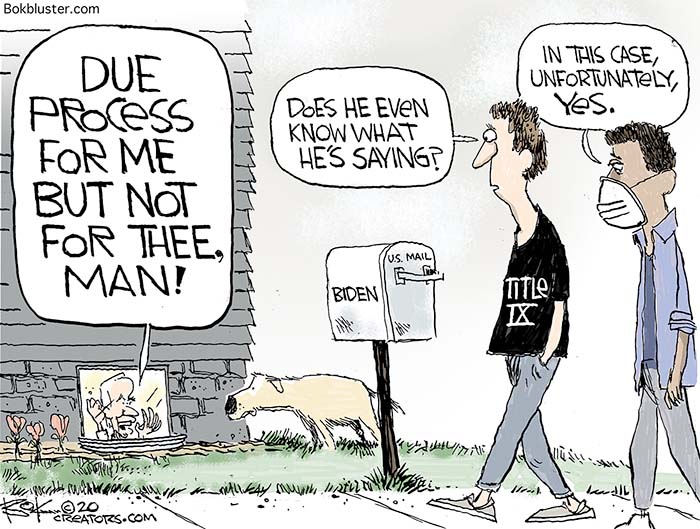
When Tara Reade came forward with allegations against then-candidate Biden about sexual assault, she was publicly smeared by most news media outlets. People who supported Biden for President then repeated those talking points without checking if they were factual or not. Former host for Rising, Krystal Ball, called out these news outlets and Alyssa Milano for their double standards. (It should be noted that Tara Reade approached the Me Too movement about investigating Biden. But they choose not to. Many believed this was because people who supported his campaign donated to the Me Too movement. It is believed they feared investigating Biden would mean an end of further donations.)The biggest problem with this type of justice is it is being served in the court of public opinion. This means there are no written rules. Acts considered fine for some will not be acceptable for others. Essentially, there is no consistency in the outrage, investigation, or punishments. Because of this, people are now understandably confused by what is allowed.
Elevator gate

In 2011, Rebecca Watson was criticized for her reaction to being asked to come back to a man’s hotel room for “coffee.” The implication was that he wanted to have sex. She declined, and no further incident occurred. There was no forceful grabbing, verbal abuse, or smearing of her character. She posted about the incident online, and this created a rift in the online atheist community. As many felt she overreacted. But others thought she was justified. Many saw the act of inviting her back for consensual sex as misogynistic. Since the Me Too movement has started, what some consider appropriate when dating or pursuing a sexual relationship has become unclear. No one is sure what warrants sexual harassment anymore. With some men going so far as to ask, “is it even right to ask women out?” (Additional context)
Social cues
This sounds hyperbolic as most adults can decipher social cues. But some women have accused men of sexually harassing them for simply asking them out. In an interview with Christie Blatchford, Jordan Peterson explains how we as a culture are now applying criminal behavior to entire groups. He uses men as an example to point out how all men are believed to be sexual predators now, because of the actions of a select few serial offenders.
You see the same thing in criminal behavior. Hardly anyone is a criminal. Then if you take the fraction of people who are criminals, most of them are like 1 or 2 time criminals. But there are professional hardcore groups that commit all the crimes. Well it is the same thing with sexual assaults and sexual harassment. Well you don’t want to confuse the action of some of the men with all of the men. Like it is really important to get the distinction right and we’re not getting that distinction right…well some of it is there’s a concerted effort on the part of the radical postmodern left to erase the distinction between categories of criminal behavior.
(Jordan Peterson, Jordan Peterson on the #Me Too Moment)
He attributes the loss of these distinctions as leading to our inability to differentiate between criminal behavior such as sexual assault and simply pursuing a sexual relationship. According to Peterson, there is no way to make this type of judgment call without a clear value system. It would leave us asking, “what are the rules? And the answer is no one knows the rules.” Without values, there is no way of deciding what a sexual invitation or sexual harassment is. Peterson further elaborates by saying that a “cynic would say anything unwanted is harassment. How the hell is the person making the offer supposed to know before?” And that is where society is at right now.
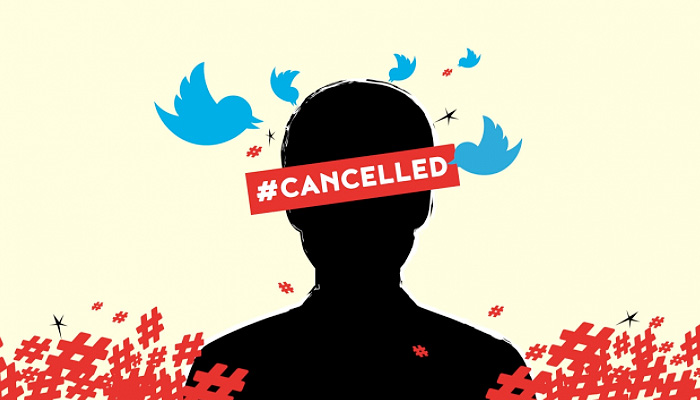
Assessment of cancel culture & online activism
While there have undeniably been some positive gains from social media and the advocacy groups that came from them. This should not be the standard by which society operates. It leaves too many possibilities to an unclear code that everyone is left to guess at. While the criminal justice system may be flawed, at the very least, it has a system that we can debate or discuss. This allows us to examine it and offer criticism. Ideally, this means the system can be improved upon. It is possible to deal with inherent faults or issues that can arise from unforeseen or new challenges. Try to keep as much of this in mind when looking at this analysis of Miss Kobayashi’s Dragon Maid.
Miss Kobayashi’s Dragon Maid: Analysis
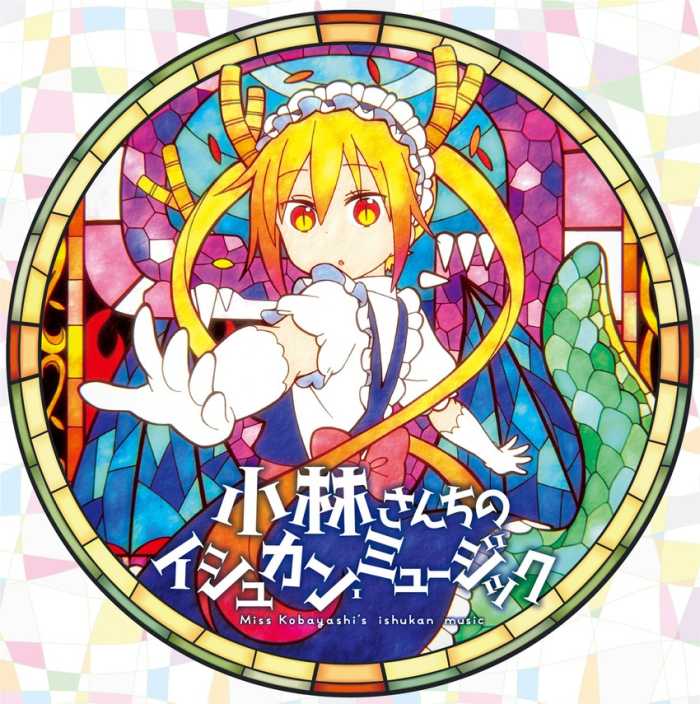
Examining art
When examining art, in most cases, only the art is being examined and not the artist. This is because there is no conceivable way of knowing their true intentions or personal thoughts unless the artist gives a direct quote. This is an aspect of criticism about art that most people accept. Since the complaint about Dragon Maid and other controversial art is that artists use art as a cover to create objectionable/illegal content, the artist’s intentions must be examined. For the sake of this article, unless there is a direct quote from the artist, do not assume that this article’s analysis of Dragon Maid or any other media is proof of the creator’s intentions. There will be a separate section dedicated to seeing if there is any truth to these accusations.
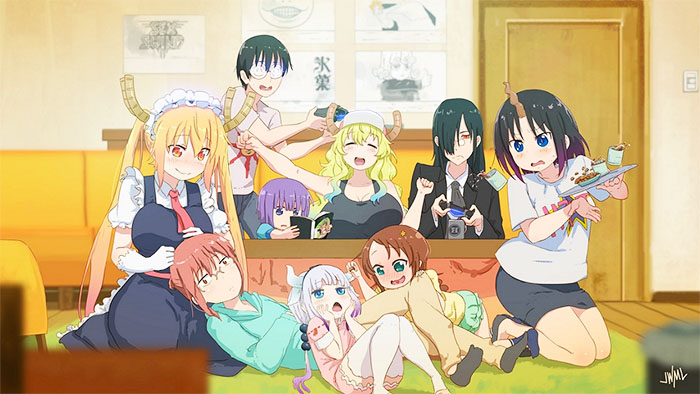
What is Miss Kobayashi’s Dragon Maid?
Miss Kobayashi’s Dragon Maid is listed as a slice of life, fantasy, and comedy anime. It follows the life of Kobayashi and her otherworldly maid Tohru. Due to Tohru’s presence, many fantastical events begin happening to Kobayashi and within the town where they live. Through Tohru, Kobayashi meets dragons and wizards from another world. Often she helps them adjust to their new life in the human world. The end result is that they discover some newfound respect for humanity or mature as an individual. This acts as the central drama for the series while also forming the base of the show’s comedy.
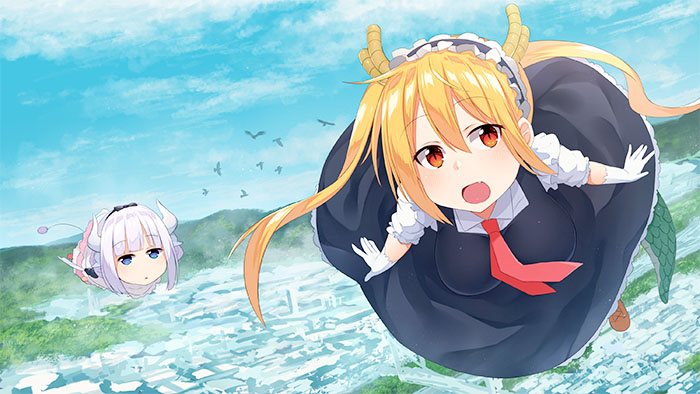
Due to the dragons being from another world, their interactions with humans are awkward. Much of the humor is based around the idea of a fish out of water situation. This leads to Kobayashi playing the only sane man or straight man in these situations. While it rarely leads to any real danger, Kobayashi still has to deal with the chaos created by these situations. These moments can be emotionally exhausting for Kobayashi. But through these events, she develops a personal connection with others. The story is mainly about individuals who previously had no meaningful relationships connecting with others and creating their own personal community, also known as a found family.
Who is Miss Kobayashi?

Kobayashi works as a computer programmer. Before meeting Tohru, her only friend was a co-worker by the name of Makoto Takiya. Being closeted otakus led to them becoming close friends, and they regularly go out drinking. After a night of drinking (without Takiya), Kobayashi becomes so drunk that she gets on the wrong train and rides it into the mountains. This is where she meets Tohru for the first time.
Tohru is initially hostile towards Kobayashi. But after Kobayashi pulls the sword of god from out of her, the dragon’s demeanor softens, and the two women begin drinking together. (Tohru states Kobayashi might have been able to pull the sword out of her because Kobayashi lacks faith. So, Kobayashi may be an atheist.) As the two get drunk (or, in Kobayashi’s case, drunker), they vent their frustrations about their lives. This leads to them forming a bond and Kobayashi inviting Tohru to come and live with her as her maid. While drunken, Kobayashi also mentions how she is frustrated with the fact that she’s alone. And in season two mentions she does not know how to feel about Kanna giving her gift on father’s day. It is a reoccurring joke that people see Kobayashi as a man or sexually unimposing for a woman. (Both Tohru and Ilulu thought Kobayashi was a man during their first meeting.) It is made clear multiple times that she is insecure about her body.
While it is never directly stated, when Kobayashi gets drunk, she may be acting on her true feelings. Almost every time we see Kobayashi, she is calm and collected. But when she becomes drunk, she openly complains about her job, voices her opinions of those around her, and freely expresses her sexual desires. These sexual desires are almost always directed at the female cast. (Typically, she will lust after Tohru and Lucoa.) Now one could write this off as a joke. But when looking at how the other human characters often hide aspects of themselves to fit in, it may be a commentary on how conformity leads to unhappiness.
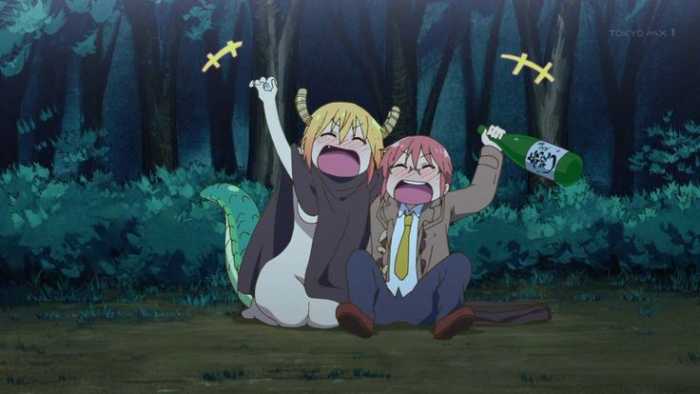
This is because the parts of themselves the humans are hiding away hold significant meaning to them. Kobayashi hides the fact that she is a maid otaku. She stopped sharing that part of herself when people in high school, her family, and the restaurant she worked at said her maid outfit did not suit her. Some also believe Kobayashi was hiding the fact that she is a lesbian. Her sexual preferences are never made completely clear, and many fans speculate Kobayashi may be bisexual. This is because Kobayashi questions how both Tohru and Ilulu can be attracted to a woman. (She may be only now coming to terms with her sexuality due to Tohru.) She admits to Tohru in the manga chapter 97 that she did not immediately reciprocate Tohru’s feelings because she lacked confidence. Shouta hides the fact that he is a mage. Take hides his feeling for Ilulu. Take could be hiding his feelings out of fear of being rejected or being pushed away by Ilulu. Saikawa often hides her true feelings behind false bravado. Takiya is possibly the only exception as he does have friends outside of the main cast who help him program his games. And while he does not openly show his otaku hobbies, he does interact with others who share his interest. Takiya is often seen playing games with Shouta and Fafnir throughout the series. He also attends conventions where he sells his mangas and games. As the series progresses, Kobayashi and the other humans gradually become more confident as they interact with the dragons and, by extension, more genuine in expressing their feelings.
We live in a society. Return to dragon.

While the human characters learn to be more honest about their feelings, the dragons learn to be more restraint in theirs. Despite the characters developing in different ways, they all change for similar reasons. The dragons do not conform to society’s norms to fit in but accommodate the person they care about. Tohru makes this clear in season two of the anime when she says,
Miss Kobayashi lately I’ve been thinking. I’m always thinking about how to serve you. But that’s just me pushing my feeling onto you, isn’t it? To truly serve you, I need to consider how you feel and what you would like me to do.
(Dragon Maid S: S2, E11)
Tohru could use all sorts of magical abilities and items to help Kobayashi. But, Takiya advises her against that, stating that “When your emotions are heightened, you can easily overstep.” (Dragon Maid S: S2, E11) It is hard for the dragons to interact with the humans because they go overboard in their displays of affection. “I don’t see what’s wrong with using all your power to make the person precious to you happy… but if Miss Kobayashi doesn’t want that, then it’s just being meddlesome.” (Tohru, Dragon Maid S: S2, E11)
I’ll take on the whole world for you
While the characters begin to adjust their behaviors, it is never for the sake of society. It is always for those they care about. These actions almost always put them in direct contention with the norms of society. While Kobayashi becomes more impulsive, it is usually only to protect her friends. Her actions to protect Tohru, Ilulu, Kanna, and later Elma often put her in direct opposition to what would be expected of her in most of these situations. The first time she is forced to do this is when Tohru’s father, the Emperor of Demise, comes to take Tohru away. He claims that Tohru’s mere presence in Kobayashi’s world threatens its natural order. While Kobayashi acknowledges what Tohru’s father is saying is truthful, she does not care. Kobayashi is unwilling to sacrifice the happiness that she and Tohru have found together. She is willing to forsake the natural order of society just to maintain her and Tohru’s happiness.
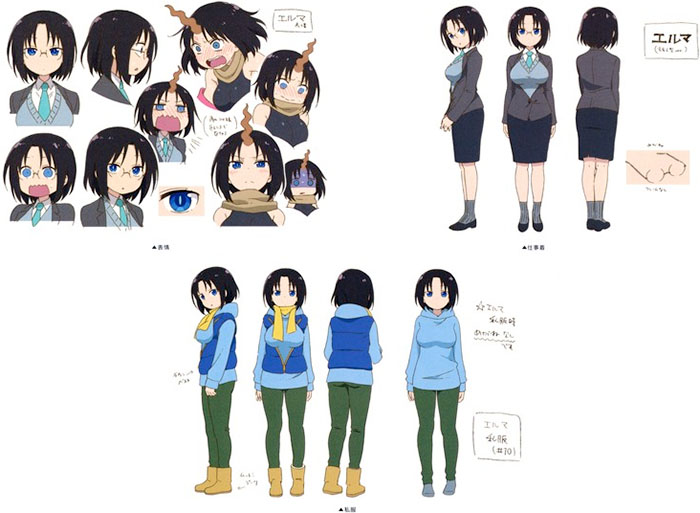
Protecting the world’s natural order was the initial reason for Elma also trying to take Tohru back as well. But, we later find out that it is a lie, and Elma is actually in love with Tohru. Elma says this love is complicated, as she does not want to marry Tohru but does not want to lose her either. This is part of the reason Tohru says she hates Elma at first, as Elma was afraid to go against the wishes of the Harmony faction. Even though they both enjoyed each other’s company, only Tohru was willing to go against her faction’s wishes to maintain this happiness they shared. Unlike Elma, Kobayashi has no problem doing this. This is why Tohru and Kobayashi have been able to maintain their relationship. The strength of Tohru’s and Kobayashi’s relationship comes from the fact that they do not care if they fit in, so long as they have each other. This is something that we see in Shouta and Lucoa’s relationship as well.
You’re sure this isn’t child grooming?
Fans who have only seen the anime will know Shouta as the young boy constantly subjected to Lucoa’s sexual advances. When considering his name is a playoff, the word Shotacon (A term for individuals attracted to young boys.), it becomes hard to not see this as a potential cover for pedophilic material. But reducing their relationship to only the jokes made in the anime and manga would be disingenuous and is only possible when ignoring the growth that both characters go through.
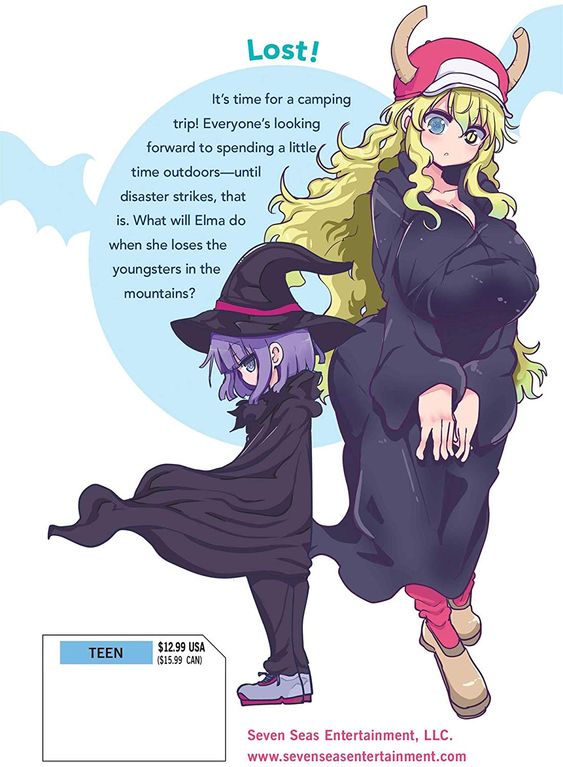
In the later chapters, Shouta becomes tired of Lucoa’s constant teasing and seeks advice from Tohru and Kobayashi to figure out a way to get back at her. Ultimately the three of them are unable to come up with any ideas, as the suggestions proposed by Tohru would harm Lucoa. While Shouta wants to prank her, he does not want to hurt her. Eventually, Lucoa comes looking for him and the two head back home together. On their way home, Lucoa tells Shouta she would have told him her weakness had he asked. In their conversation, Lucoa admits that she used to feel lonely, as she was banished from her home. But, since coming to the human world and meeting Shouta, she has found a place that feels like home. She goes on to tell him what she’s most afraid of is losing her home.
Hikaru Genji plan
At first, the nature of their relationship could be seen as ambiguous. While Lucoa makes sexual jokes towards Shouta, it is made clear that she is teasing him most of the time. Some scenes could be read as child grooming, as Lucoa deliberately creates porn and leaves it where Shouta could find it. Add to the fact that she constantly sleeps naked with him in his bed despite his protest or tries to influence him when he is sleeping. It is clear Lucoa does try to manipulate Shouta. Some scenes are meant to be comedic, but Kobayashi and Tohru make a point to call Lucoa out for her behavior. (There are some scenes where Tohru suggests Shouta just have sex with Lucoa to resolve his problems with her. But, Tohru does acknowledge that some of Lucoa’s actions are inappropriate.) This leads to Shouta calling her succubus instead of a dragon. Lucoa, not wanting to be called a succubus, becomes flustered and desperately tries to convince Shouta she is not. Both Kobayashi and Tohru tell her that she has only herself to blame due to her irresponsible behavior.

Actions like this are what always get her in trouble. Lucoa, due to her reckless behavior, lost her status as a goddess and was disowned by her family. It is hard to believe the series is encouraging similar behavior to Lucoa’s. This is because she is regularly punished for it. The reoccurring joke with Lucoa is she is thrown out of public places for wearing skimpy outfits. This joke parallels her life before meeting Shouta, as her previous sexual impropriety led to her being disowned by her family. She only learns to be more modest and respectful of others after watching Shouta at his exams. And despite her attempts at seducing Shouta, he ends up making her fall in love with him instead.
It is only after chapter sixty-six that their relationship takes on a romantic status. In that chapter, Shouta is finally taking his exam to assess his magical abilities. The previous year he could not take it because he was unable to summon a familiar. He was ridiculed by the other mages. They claimed that all of his success was due to his father’s nepotism. This is the main reason why when we first see him, he is so nervous. Shouta is filled with doubts about his magical abilities and often wants to overcome challenges on his own. This refusal to accept help often leads to him struggling unnecessarily.
To prove the other mages wrong, he refuses Lucoa’s help throughout the chapter. Despite Lucoa offering multiple times, he keeps refusing. And just like how Tohru wants to do everything in her power to help Kobayashi, Lucoa wants to do the same for Shouta. And while he does get the better of one of his abusers (William) in a race, he barely succeeds. After losing to Shouta in the race, William challenges him to a duel. During the contest, William insults Lucoa, upsetting Shouta. In retaliation, Shouta effortlessly defeats William, but not before warning him to never insult Lucoa again. Shouta’s efforts to prove he is worthy of having Lucoa as his familiar and the fact he defended her honor leads to Lucoa falling in love with him. After this Lucoa, accepts Shouta as her master. This is the moment their relationship changes. From this point on, Lucoa starts respecting his boundaries more and Shouta is even willing to accept her help on certain occasions.
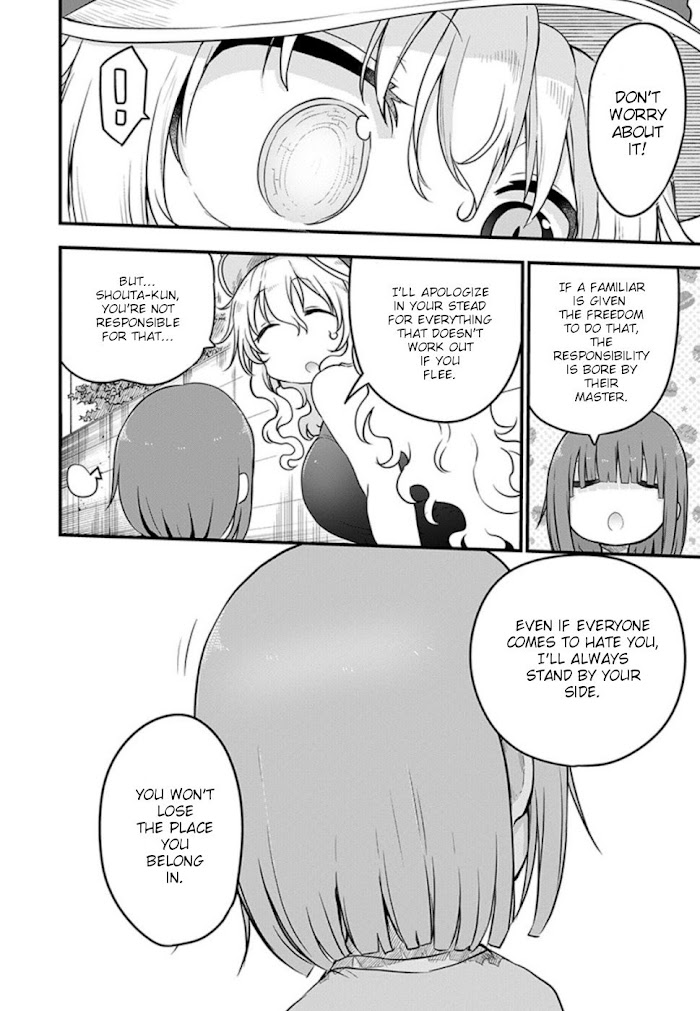
In chapter 87, Lucoa becomes scared that the rest of their friends will eventually come to hate her. This is because she is a member of the spectator faction. Due to being a member of that faction, she is forbidden from becoming involved in conflicts. This means when her friends choose to fight, she can only watch or run away. She believes there will come a point when the others turn on her for this behavior. Shouta tells her, “Don’t worry about it. If a familiar is given that freedom, the responsibility is bore by their master…Even if everyone comes to hate you, I’ll always stand by your side. You won’t lose the place you belong.” The closer Shouta and Lucoa become, the more sincere they are with one another. Lucoa also starts to become jealous of his interactions with the other female dragons in chapter 95. (They also share their first kiss in this chapter)
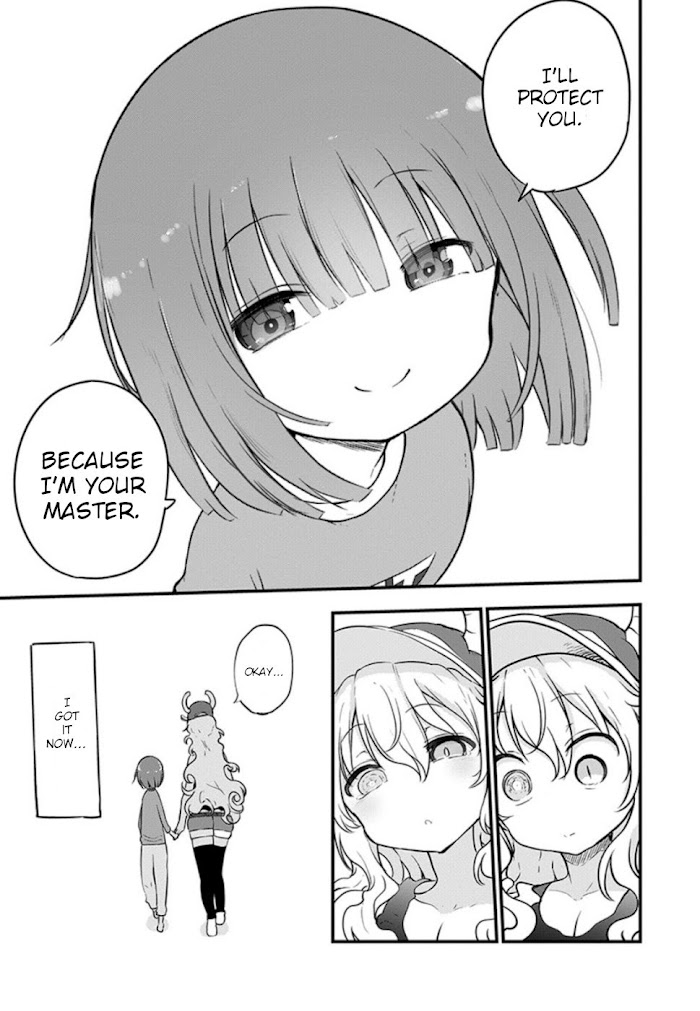
Shouta and Lucoa’s story arc depicts a trope known as the Hikaru Genji plan. This is a trope wherein an older man raises a younger woman with the intent of marrying them when they come of age. (In this case, it would be called reversed wife husbandry.)
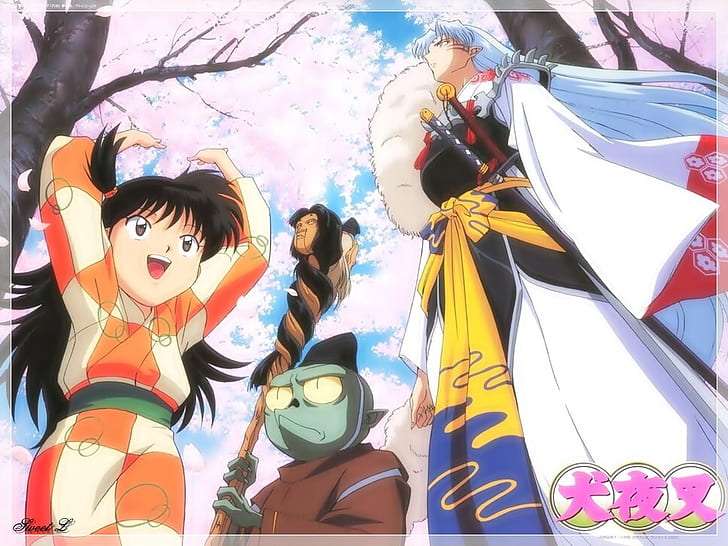
This is a popular trope in anime and can be seen in series like Inuyasha and Fate. In Fate, it is used as a joke. While in Inuyasha, it is used to develop the characters of Inuyasha and Sesshomaru. Rin teaches Sesshomaru compassion, while Kagome helps Inuyasha learn to trust others and get over the loss of his previous lover, Kikyo. Due to the origin of this trope, many have taken issue with it. This is because they believe it normalizes the idea of child grooming. (Much in the same way that they think shotacon/lolicon content perpetuate the sexualization of children) With situations like this, it becomes understandable why people might conclude that Dragon Maid is trying to normalize the sexualization of children. And even if that is not the intention, some believe the show could still have adverse effects on society.
Moderation
But once again, it is hard to believe that the series favors child grooming or sexual abuse. This is because Lucoa’s actions are not praised but condemned in the series. Every time she acts indecently, she is punished and barred from a location. (Lucoa has been expelled from heaven, the beach, and anime conventions for indecent behavior.) Despite being one of the oldest dragons we see in the series, Lucoa has to learn the same lesson as Tohru. That lesson is respecting people’s boundaries. Likewise, Shouta needs to learn how to rely on others. His unwillingness to accept help is typically what leads to his failures. We see this at his mage exam, as he almost failed due to his refusal to accept Lucoa’s help. And it is only after he accepts the help of others (mainly Kobayashi and Takiya) that he succeeds in his goals. While they suffer for these aspects of their personality, it should not be seen as outright condemnation. Lucoa’s expression of her sexuality and pleasure-seeking nature are not negative traits by default. It is the fact that she is not considerate of others’ boundaries. Likewise, Shouta’s desire to solve his problems on his own is not inherently negative either. But, his reluctance to accept help when a task exceeds his own abilities is what causes him trouble. The story seems to push the idea of moderation. We even get to see this dynamic reversed with Saikawa and Kanna.
The problem children
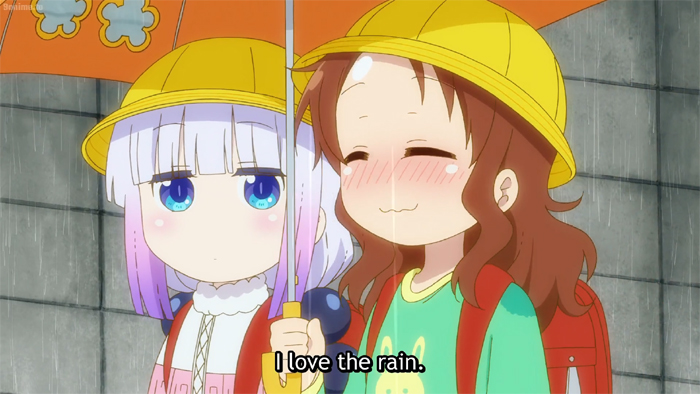
The dragons are usually the ones pursuing a sexual relationship. In Kanna’s and Saikawa’s relationship, the roles are reversed. Due to this, Saikawa has much more in common with Tohru and Lucoa, and Kanna shares more traits with Shouta and Kobayashi. On the first day of school, Saikawa is initially hostile towards Kanna and challenges her to a fight. “Well, I’m a violent person myself. I often act out when I don’t like something. At first, I didn’t like Kanna-san either, so I thought about striking her down. But, she’s so cute, so I decided I wanted to be friends.” (Saikawa to Ilulu Dragon Maid S: S1, E03) Just like Tohru, Saikawa acts aggressively against anything she dislikes or likes. This aspect of Tohru’s and Saikawa’s personalities tends to get them into trouble, as they respond impulsively in most situations. Whether it is against something they dislike or someone they love, they tend to go all out in everything they do. They are both extroverts, while characters like Kobayashi and Kanna are introverts. So, when Tohru and Saikawa express their love, it comes across as “meddlesome” to their love interest. (Kanna copes better with Saikawa’s outburst than Kobayashi does with Tohru.)
The Big O
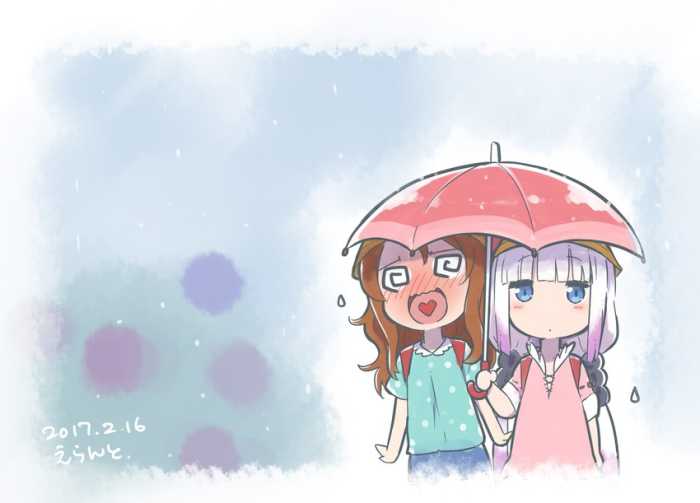
Due to Saikawa still being a child, she has yet to figure out how to express her affection responsibly. Much of the skinship moments she has with Kanna are inappropriate and lead to her making a scene. Many fans speculate her actions are not meant to be seen in a positive light. It is also heavily implied that Saikawa is ostracized or disliked due to her behavior. (Her violent outbursts seem to push the other students away. They also commented on how she acts weird around Kanna.) At this point in the series, Saikawa has not been abandoned by her family or peers yet. But, Considering Lucoa was disowned in a culture as liberal as the dragons, it is not hard to foresee a similar fate befalling Saikawa if she does not change her ways. (In dragon society, it is common to have a one-night stand or abandon a newborn dragon if they are believed to be weak. Sex is treated as something not all that important. Though it does appear dragons draw the line at sexual assault of other dragons.) This is something Saikawa acknowledges herself. And she desires to change that part of herself, so she does not cause Kanna trouble. Kanna, on the other hand, matures differently.
From selfish to selfless
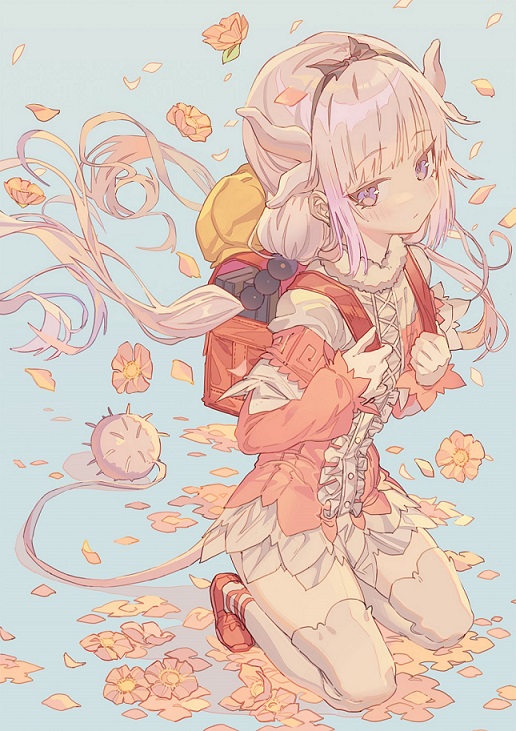
Kanna, at the start of the series, is one of the more selfish characters. After Kanna was banished to the human world for destroying a dragon ball, she sought out Tohru. (They are not the same as the Toriyama ones.) At first, it appears that Kanna just wants to bring Tohru back, as she was one of the few friends Kanna had. But it is soon revealed that after being banished to the human world, Kanna lost much of her magical powers. She needed Tohru to open a portal so she could get back. While Kanna does care about Tohru, she most likely would not have approached her or Kobayashi if she did not need help. This is because Kanna was indifferent towards humans. (She was even willing to kill Kobayashi if it meant Tohru would go back home.) But, after Kobayashi shows Kanna compassion when she is most vulnerable, we start to see a change in her character. This is because, before this, Kanna was mostly ignored by her father. (We know nothing of Kanna’s mother at this point. But, considering dragons do not always stay together, her mother may have left her father or possibly passed away.)
As the series progresses, there are several small moments where Kanna acknowledges the hardships she unintentionally causes Kobayashi. When first enrolling into school, Kanna, Kobayashi, and Tohru go shopping for school supplies. While shopping, she sees a charm she wants but decides to put it back when she realizes that Kobayashi struggles to pay for everything Kanna will need to go to school. (This scene was expanded in the anime as we do not see them go shopping in the manga. But Kobayashi does give Kanna the charm as a gift for starting school in the manga.)
Going to school is already something that she is doing just for the fun of it. Tohru comments that Kanna is not going to learn anything by attending those classes. Kanna is possibly over a hundred years old and probably knows far more than even her teacher. The writing, math, and physical activities she can do at school are easy for her. We see several times that if the dragons choose to, they can learn subjects much faster than any human could. This is due to their need for little food or sleep, on top of having magical abilities that can allow them to learn topics like different languages instantaneously. But, Kanna chooses to go to school, so she can know more about humans. This is primarily brought on by her experiences with Kobayashi. The continued kindness that Kobayashi shows Kanna, even at the expense of herself, is something Kanna has never experienced before. (Kobayashi notices Kanna put the charm back at some point and buys it for her. Kobayashi even works overtime so she can attend Kanna’s sports day. Most of Kanna’s actions in the human world are motivated by her desire to be praised by Kobayashi.)
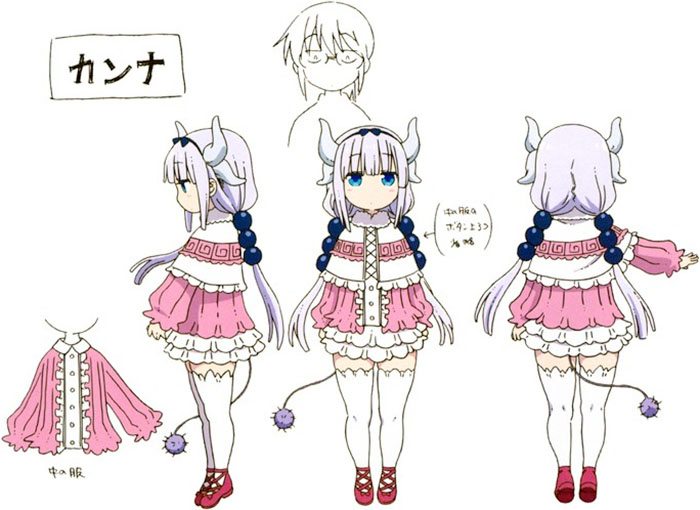
Kobayashi’s compassion and Saikawa’s friendship change Kanna from a once selfish dragon to a more selfless one. This all comes to a head when her father finally comes to the human world looking for her. But, he does not do it out of a sense of fatherly love, but because he needs her to create a dragon ball for him. This is because he may be going to war with the harmony faction soon. This initially angers Kanna, as she had hoped he would finally acknowledge her. Kanna and Kobayashi continuously write letters to him to try and change him. But it does not work, and Kanna eventually returns to her world, but not because of his demands. Kanna returns to try and save him from a wizard who purposely instigates wars between the harmony and chaos factions. She does this despite how neglectful he is to her. Kanna, at the beginning of the series, most likely would not have done this. This is because she was only focused on what she wanted. And this makes sense when considering dragon culture. According to Fafnir, a true dragon would only live for their own personal desires.
A true dragon
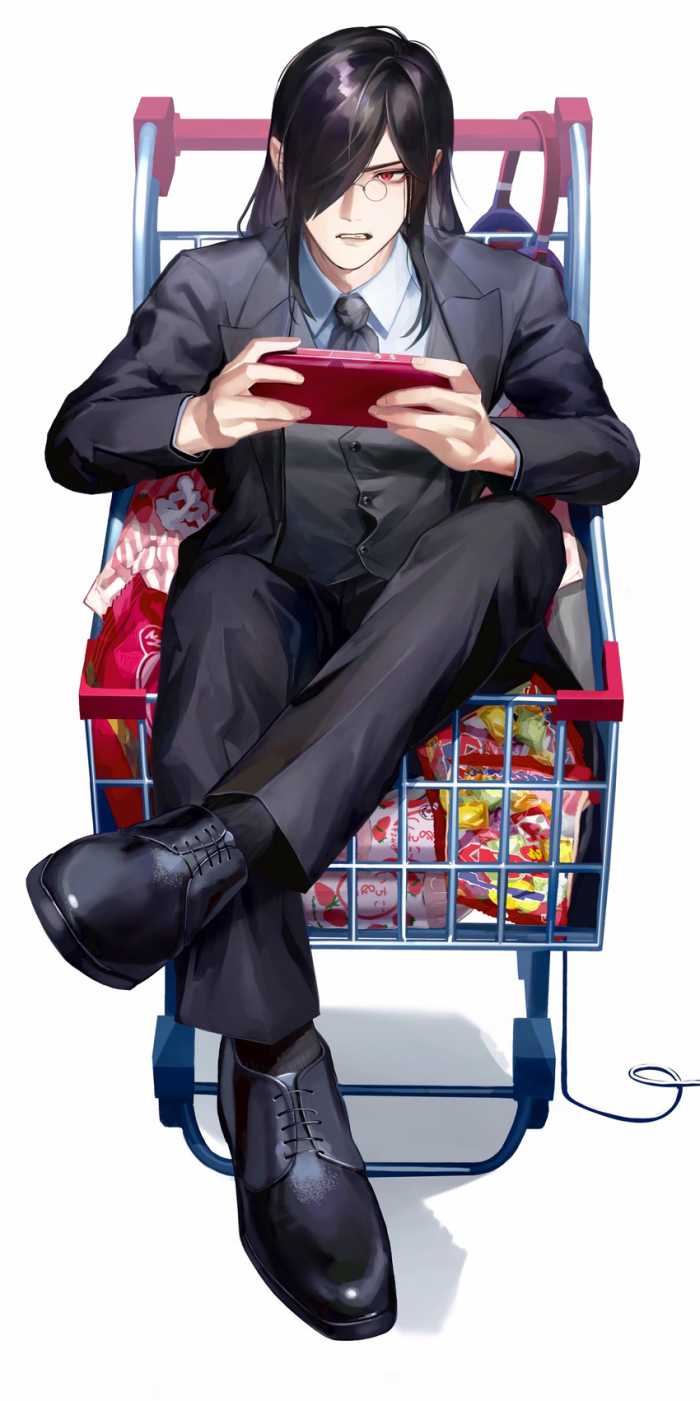
Like Tohru, Fafnir is a member of the chaos faction. They desire the destruction of humanity and the gods they worship. The faction that opposes them is the harmony faction. They are a group of dragons that desire to protect humanity and serve the gods. Now neither faction can be considered altruistic. The harmony faction expects humanity to obey them and the gods while also demanding that humanity provide sacrifices for their protection. On the other hand, the chaos faction wants to destroy humanity and the gods that threaten their way of life. Both factions are an idea taken to the extreme. The harmony faction is order brought to the extreme, while the chaos faction is freedom taken to the extreme. Neither side is inherently wrong, but problems arise due to their uncompromising nature. This is best demonstrated by Fafnir, as he is often unwilling to concede anything to anyone. “Absurd. If you can’t live your life the way you want, then you fail as a dragon…If any stand in the way of what you want to do, kill them all. Even if they’re your parents. That what dragons do.” (Fafnir to Tohru, S: 2, E: 11) Fafnir is selfish and only respects power. Out of curiosity, he chooses to live in Kobayashi’s world to see what brought about the change in Tohru.
You’re a hit
This leads to him living with Takiya. Unlike the other dragons, he does nothing to integrate with human society. He stays almost exclusively in Takiya’s apartment and does nothing but play video games. All the other dragons have a job or, in the case of Kanna, attend school. There are moments when he tries to meet up with other people he knows online, believing them to be magical beings. But, when he realizes they are human, he returns to Takiya (disappointed) and resumes playing games. While Fafnir changes very little throughout the series, he has come to appreciate humans. (Most notably Kobayashi and Takiya) He was impressed by their resolve to challenge hopeless situations, such as when Kobayashi drove away Tohru’s father. And he is impressed by Takiya’s willingness to help Kobayashi when she has to travel to the dragon’s world to save Kanna and later Elma. (Usually, Takiya has to take Fafnir’s place and grind in a video game to convince Fafnir to help Kobayashi.) These events have led Fafnir to declare that “humans are truly absurd.” Despite most situations not being their problem, Kobayashi and Takiya both try to help whenever possible. And while Fafnir accepts that the actions he and the other dragons take in this world will actively make them weaker, he appears to be enjoying himself.
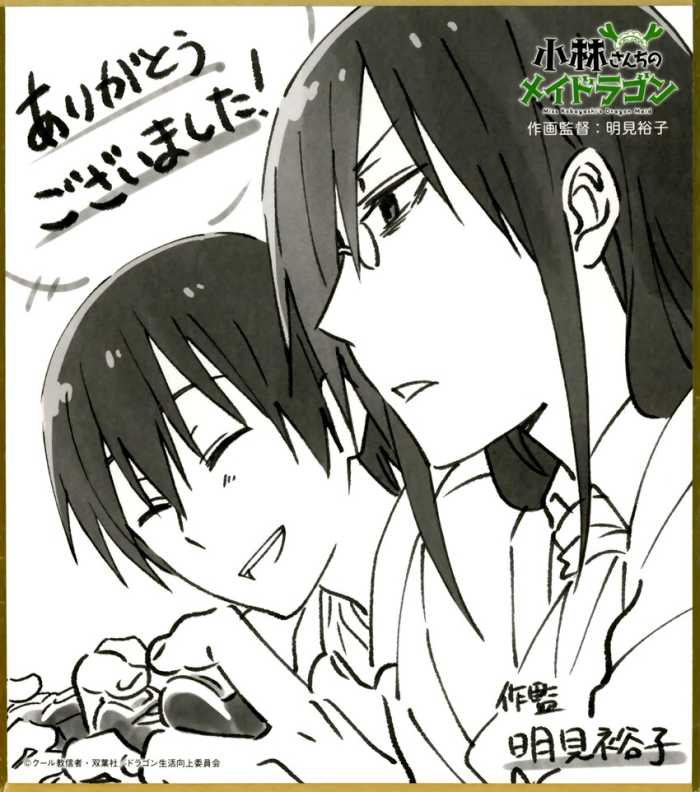
Closing thoughts on Dragon Maid
Miss Kobayashi’s Dragon Maid is a story about individuals who do not fit in. This is because their values do not match up with the norms of their society. The story does not praise their unique traits, but it does not condemn them either. The story seems to warn against the extremes of conformity and individuality, as both sides can lead to misery. We see this with both the dragons and humans. But, by compromising and meeting somewhere in the middle, we can learn to live together and find a level of happiness with others. But this is just one perspective on Dragon Maid. So, what do the critics have to say?
What the critics think of Miss Kobayashi’s Dragon Maid
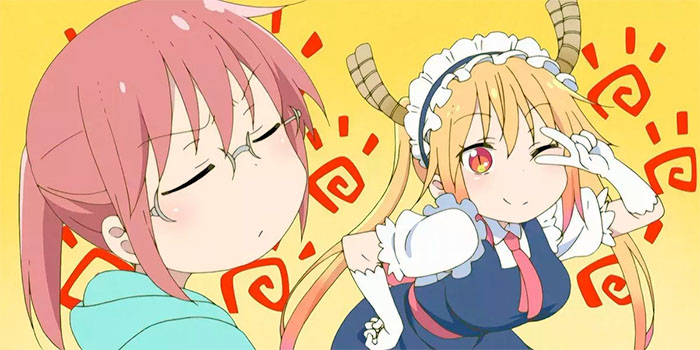
Cancel culture versus anime
On August, 10th 2020, it was announced that Miss Kobayashi’s Dragon Maid would be returning with a second season. Many fans of the series were excited about its reappearance, despite the many setbacks that Kyoto animation experienced. On February, 23rd 2021, they released a trailer for season two. While many were overjoyed, others were not as pleased due to the introduction of a new character named Ilulu. This was primarily due to her design. Ilulu is a short woman with large breasts. Many viewers misidentified her as a teenager or child and became alarmed when she was introduced only wearing a cloak and underwear. Ilulu is actually about the same age as Tohru and is considered an adult dragon. Those that disliked the trailer claimed the series needed to be canceled because Ilulu’s breasts were too big. (This was the initial complaint. It eventually became accusations of being pedophilic content.) This is similar to the Uzaki-chan drama. They believed that having such an unrealistic bust size would give girls an unhealthy body image on top of sexualizing a potential minor. (Uzaki is a college student.)
Another controversy about boobs

While opinions may vary on Ilulu’s design, most long-time fans were unbothered by it. This is usually due to the presence of Lucoa. Long before Ilulu was introduced, Lucoa acted as the primary source of fan service. She is constantly seen in skimpy outfits, and a reoccurring gag has Lucoa being escorted away for public indecency. Some point out that no one complained about Lucoa because she is designed and acts like an adult, unlike Ilulu. It could also be because the show is considered a comedy, and the fans that bothered to watch season one took these moments as a joke. (But, who really knows?)
The other complaint is that Ilulu would suffer back problems due to her short size (5’0). Unlike Lucoa, who is taller (5’7). There are implications in the anime that Ilulu’s breast actually causes her some discomfort. In the anime, Ilulu regularly sighs in relief when she rests her breast on counters and can be seen stretching her back quite often. This is implied to be because of her breast weight. This is also explained when Ilulu first moves in with the Kobayashi family. Tohru says that “Ilulu is already pushing herself as it is at that size.”(Tohru to Kobayashi, S: 2, E: 2) This is stated in response to Kobayashi suggesting she reduce her breast size to appear more normal. But she cannot do that due to her limited magical ability. Using magic is challenging for Ilulu and Kanna because the human world does not have much magical energy. It is also implied that Tohru and Elma, who have a slightly smaller bust than Ilulu, suffer a similar problem. (They have back pain.) These scenes could also be read as a joke, as Kobayashi has petite breasts and clearly gets jealous of how the older dragons all seem to have large breasts. (This is a reoccurring joke in both the anime and manga.)
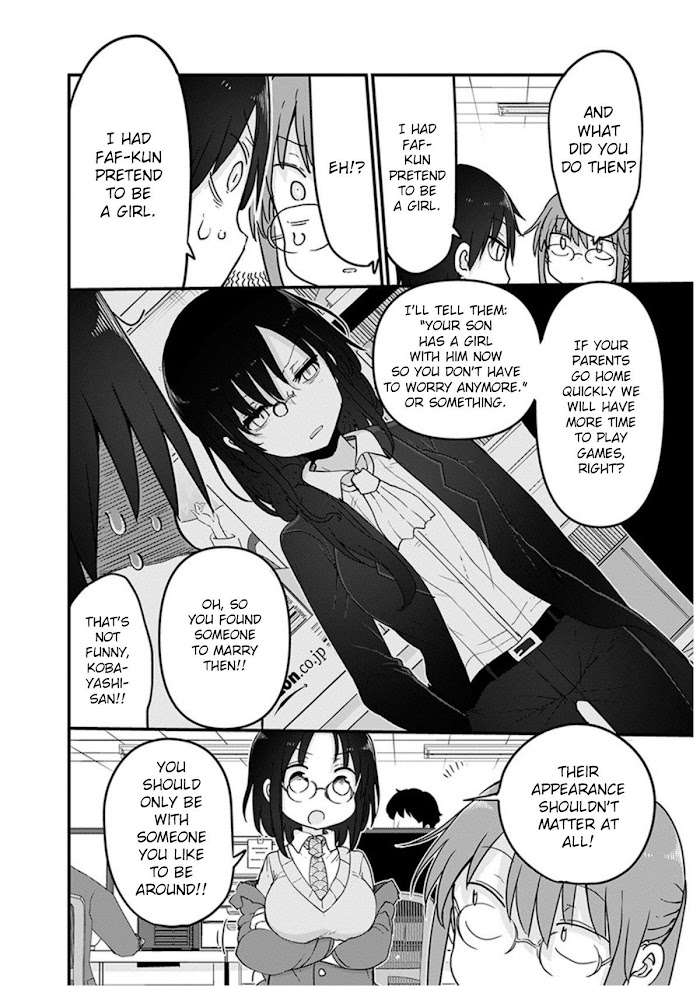
There is also an in-universe explanation that was given in season one of the anime. When Tohru explains to Kobayashi why she does not need to wear human clothes because dragon’s scales are magical and can form human clothing to disguise them. It is implied that wearing clothes on top of being in a human form can be uncomfortable for dragons. This is made worse when the clothes do not fit properly. Since Ilulu is a dragon, it is the same for her as well. (In the manga, Ilulu reveals she prefers being naked, as clothing is uncomfortable for her. Vol 6 chapter 56) If someone’s only exposure to the series was the one-minute and forty-second trailer, there would be no way of knowing any of this. Since the trailer lacked this context, it would be nearly impossible to pick up on the show’s sense of humor. To learn all this, one would need to watch the anime or read the manga to get the full context.
It’s okay to express sexuality
A possible criticism for this explanation is that the creators do this just because they want to sexualize a character, and this is probably true. But there is nothing inherently wrong with the artist designing a character in a way that they find appealing. A character’s appearance can reveal aspects of their personality. It could also serve a narrative purpose. It could also just be for the fun of it. In a similar situation director, Yoko Taro was criticized for the sexualization of 2B in Nier: Automata. When he later addressed the criticism, he responded, “I just really like girls.” This is what we would call freedom of expression, and it is one of the traits cherished about art. This is what is denied when practices like canceling are engaged in. Not all art is going to appeal to everyone. This is why people develop preferences and aversions for specific content. But, just because some art is offensive does not mean it should not be protected like all other art. Art should be criticized, not destroyed.
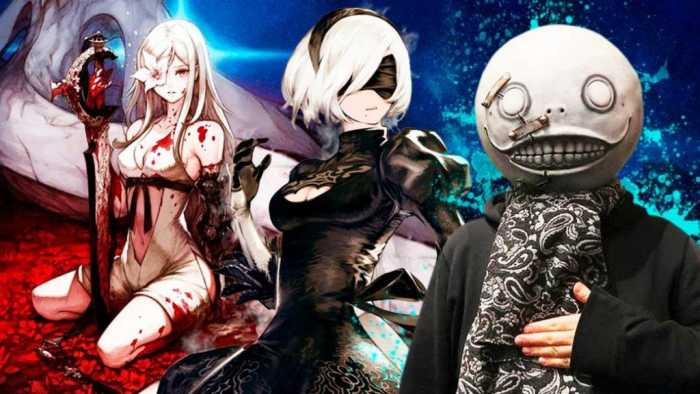
It is okay to offer criticism
Fans that watched the first season pointed out that the criticism on social media was merely reacting to surface-level problems in the trailer. And they criticized people on social media for making shallow complaints about the series. Many who watched the first season believed that had the online critics seen it; they would have made a more substantive criticism about the season two trailer. Those who disagree with the practice of cancel culture see these recent cancelation attempts of popular anime as proof that people online are simply virtue signaling. As many have pointed out, the individuals who called for the canceling of Dragon Maid got basic facts about the show wrong. (This happened with Uzaki-Chan and Nagatoro as well.) This does not mean Dragon Maid is free of criticism. But basic due diligence should be taken. Especially when accusing people of being pedophiles.
KorewaEden

If someone was looking to criticize the series, examining Kanna Kamui (9 years old in human form) and Shouta Magatsuchi (age 11) is where fans believe criticism should start. Despite being elementary school students, both characters are regularly put in situations that are sexual. Kanna’s friend Rika Saikawa (age 9) will often have exaggerated fits of excitement that the fans have dubbed the kannagasm. (Kanna + orgasm = Kannagasm) While these scenes can be read as comedic, many who viewed these situations were understandably uncomfortable by the sexualization of characters that are in elementary school. YouTuber KorewaEden made a video criticizing those on Twitter who got upset over Ilulu for having “big badonkers.” (Dragon Maid Season 2 Is Already Canceled…, KorewaEden) As they put it,
I could say with almost one hundred percent certainty that people who are crying about Ilulu’s big ass boobies have not actually seen Dragon Maid. There’s no way you can make it through season one; watch the fucking loli twister scene and then think it’s a perfectly normal anime. Then just now notice an oppai loli and start getting upset.
(Dragon Maid Season 2 Is Already Canceled…, KorewaEden)
KorewaEden’s comments should not be taken as them being in support of this type of content. Within that same video, they say that scenes like the game of twister made them feel uncomfortable. But they believed the show had more to offer beyond this, And that fans should promote those aspects.
Child-Coding 101 with Noralities

Similarly, YouTuber Noralities criticized Twitter for reacting negatively to Ilulu’s breast. And like KorewaEden, Noralities claimed that if the individuals on Twitter really had a problem with the series, they would have criticized season one for its scenes involving Kanna and Saikawa. They found that Kanna was heavily sexualized for a character confirmed in the text as a child. In their video, they created the term child coding. According to them, child coding “just means a character has design elements that make a character read to the audience as childlike even when they may not be in a technical sense.” (Noralities, How Coded Character Design Works)This led to them heavily criticizing the anime community for its legal loli defense. In their words, “Like everyone understands how dog years’ work. I don’t understand how we keep coming back to the ten-thousand-year-old dragon loli well.” (Noralities, How Coded Character Design Works) This is said in objection to the idea that just because a character is technically over the age of consent, this means they are an adult. This is not true, both in the world of Dragon Maid and multiple other works of fiction. (I.e., Star Wars, Baby Yoda {age 50}, and Sailor Moon, ChibiUsa {age 900}) Noralities received criticism for using a term they made up in their analysis. The problem isn’t that Noralities made up a definition. The real issue, besides being redundant (Token mini moe, manchild, lolicon, Shotacon are all tropes that basically mean the same exact thing as child-coding.), is Noralities use of their own definition is inconsistent.

Their video uses the term child-coding to explain the difference between designing a short woman versus a child. In Noralities explanation for child-coding, they use La Brava from My Hero Academia as their example of a short woman. They point out how despite being short, (3’7), La Brava is curvy and has a hip to waist ratio that would be in line with that of an adult woman. This is commonly referred to as an hourglass figure. Her figure, combined with being voiced by an adult woman “who uses her normal speaking voice,” (Noralities, How Coded Character Design Works) makes her come across as an adult to Noralities.
It is possible that Noralities misspoke in their video or did not research the voice actors. As the English voice actor Megan Shipman is not using their normal speaking voice when voicing La Brava. She speaks in a much higher pitch when voicing the character. Neither is the Japanese voice actor Yui Horie. As Yui has a much higher pitch than La Brava and has to lower it when voicing her. It could be Noralities meant La Brava’s has a normal speaking voice or normal mannerisms. One cannot know for sure what Noralities really believes or means. Also, most voice actors are adults. Typically young male characters are voiced by adult women. In some cases, Japanese women will voice adult male characters. Notable examples are Goku and Naruto. (In the Japanese versions of the anime) Whether a character is voiced by an adult or not is irrelevant to them being considered an adult. (Sometimes shows will purposely give characters voices that do not fit their body for comedic effect.)
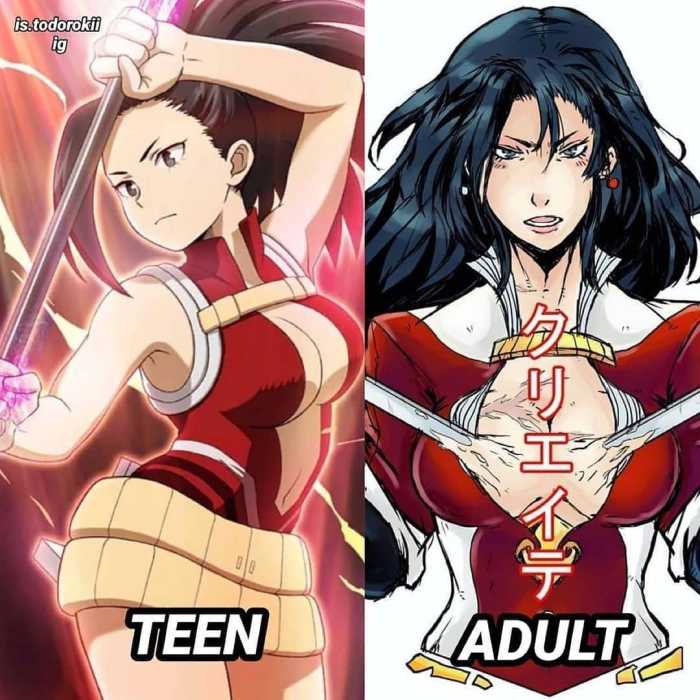
An additional problem with this theory is that many anime characters that are in high school have a similar curvy shape. One would have to wonder how Noralities differentiate high-schoolers from adults. Momo Yaoyorozu is often considered mentally mature for her age. Usually, she is even more mature than adults like All Might. She will be the voice of reason most of the time. She also has a deep voice in the English dub. By Noralities own definition Momo would come across as an adult. This theory would also exclude short and thin women like Kobayashi. (Another problem with this theory is it does not consider male characters’ body type.)
Noralities believed these traits, when combined, signified that the character was merely short, as opposed to them being infantilized. This is what Noralities thought was the difference between La Brava and Ilulu. As they assumed after watching one of the trailers where Ilulu rhymed in a childlike manner, she was being infantilized. Noralities believed by using this definition, anyone could tell the difference between a short character and a child-coded character, no matter the artist’s style or genre. This is also how they concluded that pedophiliac content was being normalized by the inclusion of lolicon characters in anime. This is why they heavily implied that Japanese artists like Coolkyousinnjya were unintentionally/trying to normalize pedophilia. Noralities cited Japan’s rising cases of sexual assaults and the fact that the creator of Rurouni Kenshin, Nobuhiro Watsuki, was caught with child pornography (CP) as proof of a rising sexual assault problem. Nobuhiro faced no prison sentence but received a fine. That fine was lighter than what some fans expected; despite Nobuhiro possessing multiple videos of CP. Noralities cited this as evidence for Japan having been normalized to pedophilia. (This information will be more thoroughly examined in a later section of this article.)
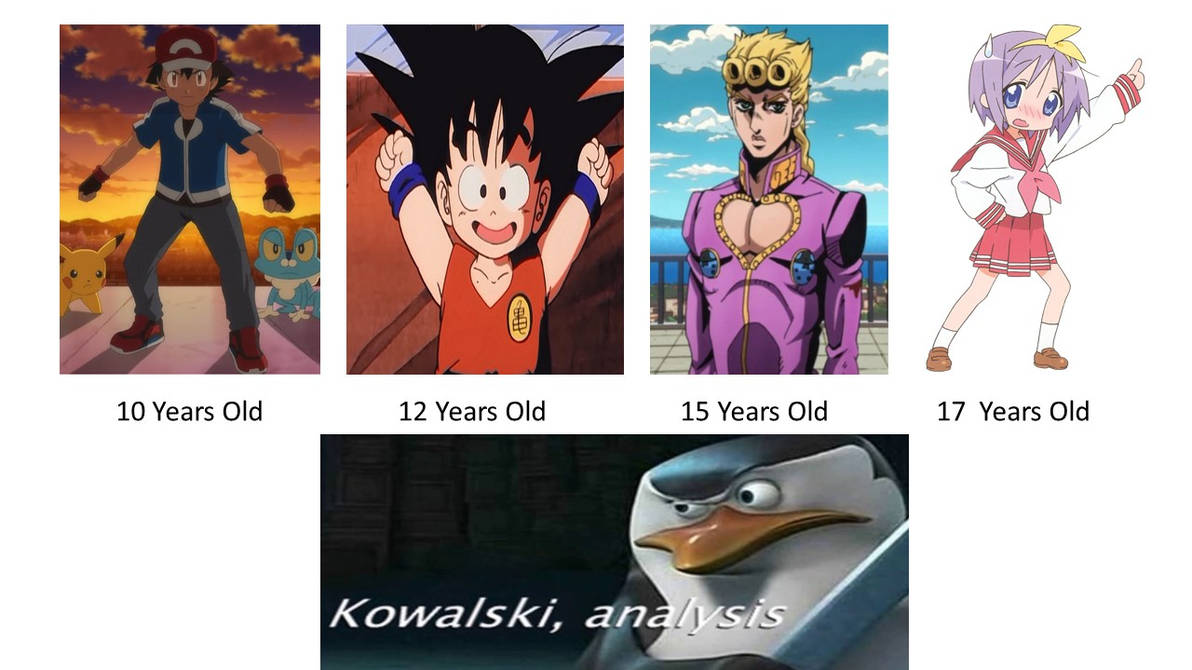
Are you meming me?
Once again, in the text, Ilulu is confirmed to be nearly the same age as Tohru. While at the time, Noralities could not have watched the anime to find this out, as the anime was not avaible yet. They could have looked into the manga to confirm this. Multiple times Ilulu is called an adult by the other dragons. It is made clear that Ilulu is only pretending to be 16 because of how her human appearance looks and because she enjoys playing with kids. Ilulu does not usually talk in a simplistic rhyme scheme like she does in the trailer. Ilulu’s speaking mannerisms are more mature. Also, Ilulu said she wanted to have kids with Kobayashi, as she was at the age when most dragons would start having a family. But even if this was not enough evidence to prove to people that Ilulu was an adult. Noralities own description for the differences between a short woman and a child would include Ilulu. Ilulu is short, curvy and her voice is about the same pitch as the other adult dragons. Ilulu is 5’0. That would mean Ilulu, is only 4 inches shorter than the average height for women. Ilulu would be included in Noralities’ description of a short woman. While La Brava, on the other hand, is 3’7. (This is the same height as Eri, an eight-year-old girl in the same series.) La Brava has far more in common with a child than Ilulu. La Brava is even shorter than the average height for people with growth hormone deficiency. (Most people will know this as dwarfism. Anyone who is an adult but is 4’10 or less is classified as having this condition. If we were applying real-world rules to MHA, La Brava would likely have proportionate dwarfism.)
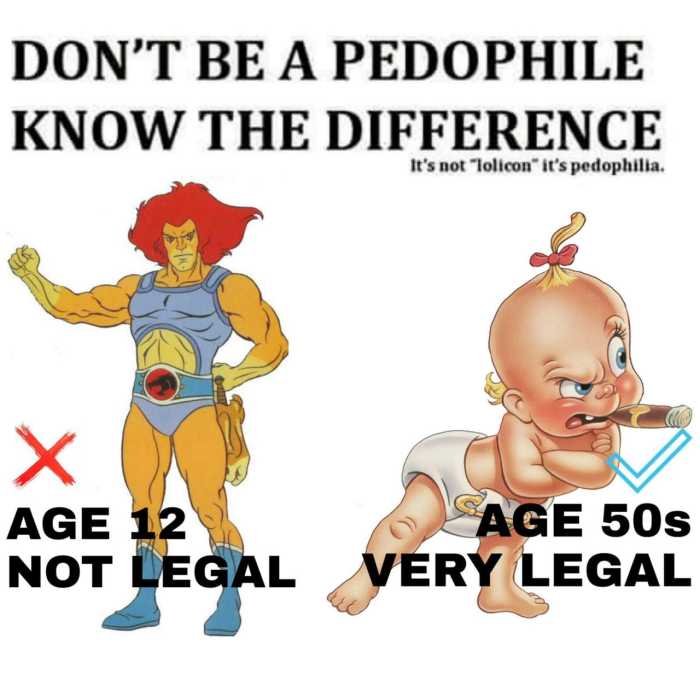
Despite what Noralities believes, their definition does not work when figuring out a character’s age. (They even admit that if they applied this definition to themselves in their own video, they would be the same height as a 10-year-old boy. Meaning by their definition, they could be mistaken as a grade-schooler, despite being a college graduate.) Due to many narrative tropes and how stylized the art is, figuring out a character’s age in Japanese anime would be nearly impossible when using Noralities method. This is not a trope that is unique to Japanese culture either. People have accused Noralities of cherry-picking. This is because the art book she uses also explains how an artist could stylize a character by drawing them taller or shorter than what would be expected of an average person. Necro XIII does a complete breakdown of both Noralities videos and accuses Noralities of forging evidence for their points. (Necro’s Andrew Loomis section covers stylized drawings specifically.) It should also be noted this is not the first time Noralities has been accused of cherry-picking or poorly researching a topic. NatalieXHunter created two videos addressing the inaccurate information and biased points made by Noralities. (Isekai genre and Dragon Maid)
An important distinction to make between Noralities and other YouTubers is their stance on freedom of expression. While other YouTubers found aspects of the series problematic, only Noralities was in favor of canceling it. Noralities does not say it in their first video. But, they do in their second video and create a graph for when they believe it is appropriate to cancel someone’s work. (In the second video, they say they are not in favor of canceling content at the end. But in the video, they make calls for boycotting and stopping support of offensive content. Because they have two conflicting points of view in that video, I do not know which side takes precedent for Noralities.)
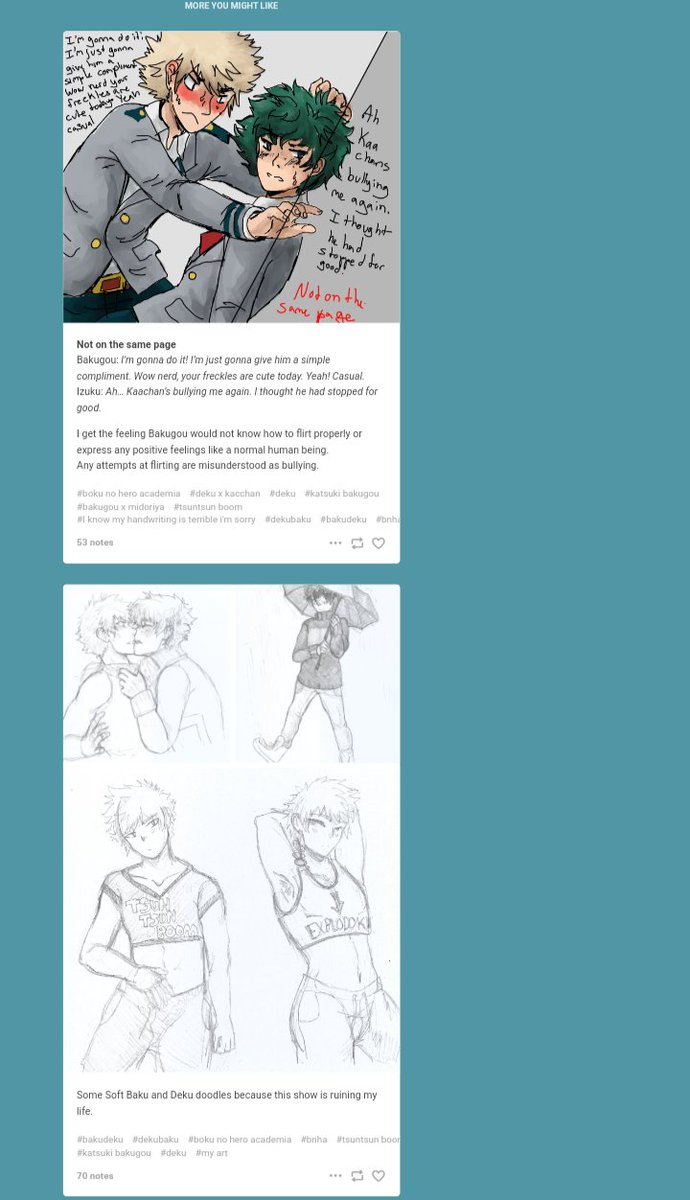
Image source MintFlavorstuff.
Another criticism made of Noralities is how they heavily criticized anime for sexualizing minors. But on their tumbler, they had pictures they had drawn of the boys from My Hero Academia heavily sexualized. This is an example of having a double standard. On top of their drawings, Noralities is a fan of the series Toilet-bound Hanako-Kun. This series follows a ghost boy who is technically 55 but looks and acts like a 13-year-old. Throughout the series, he becomes romantically involved with a girl named Yashiro, age 15. Noralities praised the series for having what they called “natural skinship moments.” They admitted they were biased and enjoyed this type of content. This naturally confused fans who liked Dragon Maid, as they did not see a difference between the two series. YouTuber Jakez123 made it clear he does not care for the sexualization of minors in anime either. But he criticized Noralities for having a double standard. As, Noralities accused artists like Coolkyousinnjya and Dragon Maid fans of being pedophiles for enjoying/creating sexual art involving minors while engaging in the same behavior. Jakez123 goes on to say if you take this stance, “you yourself cannot then go on to participate in the act you are criticizing.” (Jakez123, Noralities is a HYPOCRITE) It should be noted Jakez123 admits this does not disprove Noralities points. But if what Noralities says turns out to be accurate, they would be just as guilty as those they are criticizing. This is why NatalieXHunter believed there was likely another reason people enjoyed this content besides being pedophiles.
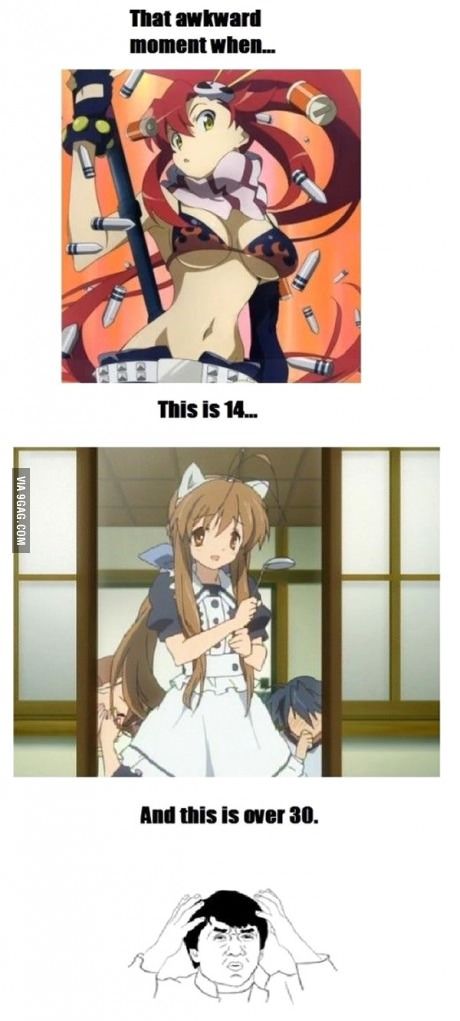
Most people are already aware of this or accept this reality, as it is a meme in the anime community. It is often used for jokes in the slice of life genre. There are even instances in shonen animes where a short or young-looking character surprises the villain by being stronger than the taller/older characters. (This is a trope Akira Toriyama uses multiple times with characters like Gohan, Goku as a kid, Vegeta, Kid Buu, and Frieza.) Japanese artists are aware of this and deliberately take this to a hyperbolic level for comedic effect. Lucky Star, another anime produced by Kiyoto animation, uses this trope in one of its jokes. “If a guy in the same years as Yu-chan or me (Konata) professed his love, would he be a pedo?” (Lucky Star S: 1, E: 22) Despite being 17, Konata and Yu look childlike. Since they have a youthful appearance, despite being teenagers, Konata questioned if someone could be sexually attracted to them and not be a pedophile. This is not something unique to Lucky Star or Dragon Maid. This is a reoccurring joke in anime about a real problem some people have when dating. Due to looking too young, some people can turn off a romantic partner or attract unwanted attention. Many in Noralities comment section brought this point up, as they recounted stories of how they were mistaken for middle schoolers/teenagers despite being well into adulthood. (Which based on Noralities own description of themselves, they would be included in this group as well.) The reason we have the age of consent is that there are no precise distinguishing characteristics that separate adults from teenagers. Making fun of individuals attracted to petite women or individuals who believe that sexual jokes in anime reflected the artist’s personal feelings was the original purpose of the lolicon trope. According to Cory Lyn Takeuchi in their essay:

The first Lolicon works were intended to be parodies of any supposed connection between cartoonish characters and eroticism. Although these works featured cute Tezuka-inspired childlike characters having sex, they differed from pornographic manga that were drawn in a more realistic style; thus, such works were meant to be humorous, and only a minority found such works to be erotic in nature.
(Takeuchi, Regulating Lolicon: Toward Japanese Compliance with its International Legal Obligations to ban Virtual Child Pornography)
While the original purpose of the trope was to mock the idea, these types of drawings were a reflection of the artist’s personal sexual desires. The trope has since evolved and is now commonly used by hentai artists like Coolkyousinnjya.
By the 1980s, this dynamic had changed. A large fan-base developed that found lolicon works to be erotically appealing, which resulted in an outpouring of professional and amateur comics in support of the new pornographic genre. This new market grew large enough to support a variety of niches and specialty magazines. Today, lolicon is something of a blanket term used to refer to any manga that concentrates on this theme of sexual obsession with the shōjo ideal.
(Takeuchi, Regulating Lolicon: Toward Japanese Compliance with its International Legal Obligations to ban Virtual Child Pornography)
While Noralities sites that Coolkyousinnjya draws lolicon hentai art, their description of both Coolkyousinnjya’s mangas and hentai are somewhat disingenuous. As much of the loli/shotacon characters who are sexually active in his hentai and mangas are individuals who are between the ages of 18-24. It is often that the characters simply look younger than what they really are. This is the same situation as La Brava. (He also has hentai stories where the character’s body is regressed to an earlier stage of their life.) This, for many, is the most significant point of contention. Critics do not believe an artist can draw characters that are children or are made to look like children in sexual situations without having some desire to engage in such behavior. And even if that is not the intention, some believe this content could still have adverse effects on society.
It’s just fiction. But fiction affects reality.
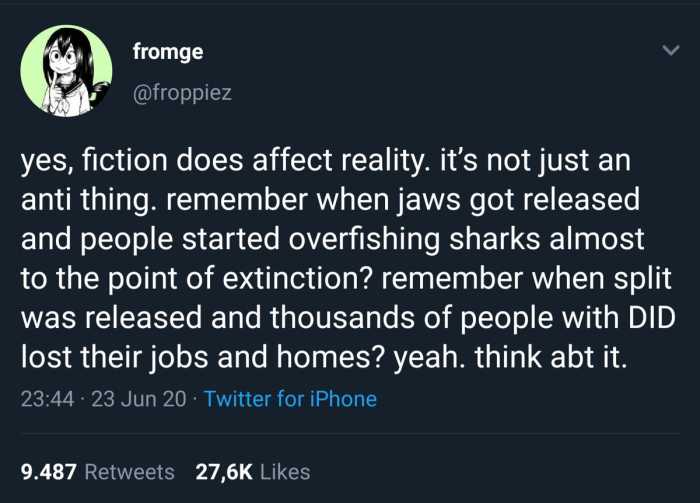
How does this make you feel?
The answer to this question is complicated. This is because there are kernels of truth to both sides of this argument. A common defense of taboo fictional content is “fiction does not equal reality.” This was a criticism aimed at Noralities for her video criticizing Dragon Maid. She responded to this criticism in a follow-up video. Mentioning how films like Jaws, Birth of a Nation (1915), and Nazi imagery negatively affected the world, despite just being works of fiction.
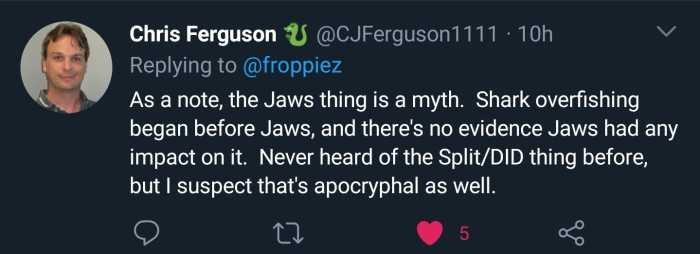
Additional info supporting Cris Ferguson’s claim.
Before Sharks where being overfished in the west, Marlons and Salmon where being overfished. It stopped once westerners realised they were high in Mercury. In western countries it became popular to hunt Sharks in the1980’s, but in eastern asian countries shark fin soup was already popular. Not being aware that Sharks were also high in Mercury many western countries began overfishing them the same way they did Marlons and Salmon. The fact that shark Fin soup was popular and fins were easier to preserve also incentivized the practice. Source of Image.
Art undeniably can have an effect on people. So much so that it can help some people work through their depression. (YouTuber Hamish Black {a.k.a writing on games} claimed Dark Souls helped them overcome depression.) To say art has no effect on society would be an insincere statement. Art undeniably has an impact on us. But, there are three problems with this statement. The first is that what someone gets out of art is entirely subjective. The second issue is that it also tries to annul individuals of personal responsibility by blaming offensive media. Finally, there is nothing wrong with having a fantasy, so long as it remains a fantasy. All of this is provable when examining Birth of a Nation.
It should also be noted that content like Birth of a Nation and Nazi imagery is often dissociated from art. Both are considered propaganda and not art. The purpose of propaganda is to instill fear or spread a biased political message. Propaganda is “always” heavily biased and intentionally “misleading,” as it does not present both sides of a topic. The effectiveness of propaganda is debatable, as it is often presented in an environment that controls what information is available. That way, the people forced to see the propaganda cannot be adequately informed on the subject matter. This is why most totalitarian governments control what information comes in and out of their countries. Propaganda is not always effective, as it requires a specific type of environment to work. And in an environment where people are free to explore their own thoughts and challenge other opinions, it typically will not work. This is because propaganda like Nazi imagery and racist films will conflict with the reality of most people’s situations.
To be clear, this only works if the person actually explores other opinions. People who are vulnerable to being swayed by propagandist messages typically exist in a social echo chamber. This is why people can still become radicalized in countries like North America, despite having nearly unrestricted access to information. But this is why people say it is up to the individual to figure out the truth for themselves. This means it is necessary to engage with other outlets or opinions that conflict with what you believe in. It should also be noted becoming radicalized is not something limited to racist, religious groups, or conservative. Feminists, liberals, atheists, and fandoms can all become radicalized. Radicalization is when someone becomes so dogmatic in their views that they are unwilling to listen to dissenting opinions or examine evidence that may contradict what they know. Anyone can become that way on any topic. (This is why most people have problems with modern news organizations, as they rarely present both sides of events fairly.)
Correlation does not imply causation

Ignoring that Birth of a Nation is considered propaganda, Noralities statements about it leading to the revival of the Ku Klux Klan are misleading at best. Multiple contributing factors would have to be ignored to reach this conclusion. Correlation does not imply causation. In the case of Birth of a Nation, it did not turn people into racists. It is more likely that the people who supported it were already racist and got a confirmation bias from the film. This should not surprise anyone, but after the U.S. Civil War ended in 1865, racism did not magically disappear. Almost immediately after the thirteenth amendment was passed, laws limiting the rights of African Americans called black codes were put into place.
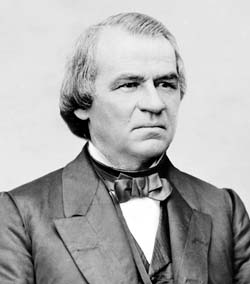
Following Lincoln’s assassination in April 1865, Andrew Johnson became president and inaugurated the period of Presidential Reconstruction (1865–67). Johnson offered a pardon to all Southern whites except Confederate leaders and wealthy planters (although most of these subsequently received individual pardons), restoring their political rights and all property except slaves… Apart from the requirement that they abolish slavery, repudiate secession, and abrogate the Confederate debt, these governments were granted a free hand in managing their affairs. They responded by enacting the Black codes, laws that required African Americans to sign yearly labor contracts and in other ways sought to limit the freedmen’s economic options and reestablish plantation discipline. African Americans strongly resisted the implementation of these measures, and they seriously undermined Northern support for Johnson’s policies.
(Britanica.com)
Despite Andrew Johnson’s lenient policies towards the former confederate states, he received push back from “Radical Republicans, a powerful antislavery faction within Congress that was committed to enfranchisement and equal rights for freed blacks.” (Britanica.com) During the early years of the reconstruction period, many black voters,
Loyal to the Union during the Civil War, they saw the Republican Party as a means of keeping Confederates from regaining power in the South. In every state, African Americans formed the overwhelming majority of Southern Republican voters. From the beginning of Reconstruction, Black conventions and newspapers throughout the South had called for the extension of full civil and political rights to African Americans. Composed of those who had been free before the Civil War plus slave ministers, artisans, and Civil War veterans, the Black political leadership pressed for the elimination of the racial caste system and the economic uplifting of the former slaves. Sixteen African Americans served in Congress during Reconstruction—including Hiram Revels and Blanche K. Bruce in the U.S. Senate—more than 600 in state legislatures and hundreds more in local offices from sheriff to justice of the peace scattered across the South. So-called “Black supremacy” never existed, but the advent of African Americans in positions of political power marked a dramatic break with the country’s traditions and aroused bitter hostility from Reconstruction’s opponents.
(Britanica.com)
The increased number of African Americans in political positions and their growing business presence led to many former slave owners feeling resentful. (Most Southern African Americans during this time worked as sharecroppers. It did not offer much finically, but it did mean former plantation/slave owners had to split the crops with people they once considered “subhuman.” This led to them being resentful of African Americans.) This resulted in multiple terrorist acts by the Klu Klux Klan on African Americans, the Freedmen’s Bureau, and Black government officials. Now it is true they were suppressed as Andrew Johnson’s successor, Ulysses S. Grant, worked with the Radical Republicans to protect African Americans. And, “in 1871 the administration launched a legal and military offensive that destroyed the Klan.”(Britanica.com) This led to the KKK going primarily dormant until 1915. But, suppression of the KKK in 1871 did not remove the racist sentiments in America at the time.
During the 1870s, many Republicans retreated from both the racial egalitarianism and the broad definition of federal power spawned by the Civil War. Southern corruption and instability, Reconstruction’s critics argued, stemmed from the exclusion of the region’s “best men”—the planters—from power. As Northern Republicans became more conservative, Reconstruction came to symbolize a misguided attempt to uplift the lower classes of society. Reflecting the shifting mood, a series of Supreme Court decisions, beginning with the Slaughterhouse Cases in 1873, severely limited the scope of Reconstruction laws and constitutional amendments.
(Britanica.com)
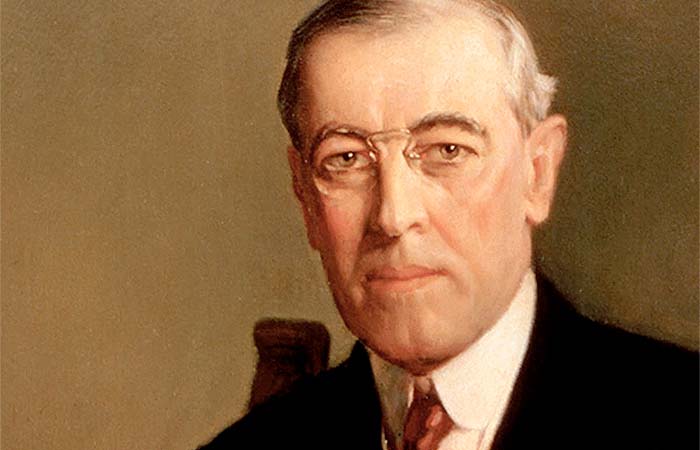
After the reconstruction era ended in 1877, America started to see a series of laws that limited African Americans’ ability to engage in the electoral process. African American voters were forced to pay poll taxes and pass a literacy test to vote in an election. (Even when they managed to meet these requirements, corrupt officials prevented them from voting.) The most prominent legal decision would come in 1896 when the Supreme Court ruled in favor of separate but equal in the Plessy v. Ferguson case. This led to an expansion of earlier laws created in 1865 and started the segregation era in America (1900-1939). This is the period people typically imagine when they think of post-civil war America. These laws led to African Americans and many other minority groups being separated from “white” Americans. This was also when we started seeing the construction of multiple Confederate statues. Streets, government buildings, and schools were also being named after confederate generals. (Most Confederate statues were built between 1902-1911.) Many believe these name changes and statues were created to insight fear in civil rights activists. This would all be capped off with the election of President Woodrow Wilson in 1913. President Wilson would then go on to screen Birth of a Nation in the White House. (1915) This is typically why people give the film so much credit for reviving the KKK. But, this is disingenuous, as it would ignore the nearly fifty years of build-up to these events. The policies and laws put forward to remove and prevent African Americans from being involved in the political process. To say that “Birth of a Nation single-handedly lead to the revival of the Ku Klux Klan” (Noralities, I’m worried about cancel culture) is factually untrue. Multiple factors were clearly at work. While it is possible, the film led to an increase in membership. Other factors played a significant role in the general racist sentiments of late 19th and early 20th century North America.
It should also be noted that the response to it was not universal, as many reacted negatively, which led to President Wilson trying to distance himself from it. Many activists came out in protest of it. And wanted it pulled from theatres. How people choose to react to content is entirely subjective. This is why when offensive content is created; we usually do not hold the creator responsible for the actions of those inspired by their creation. People are capable of making their own decisions.
Wait, I heard this story before
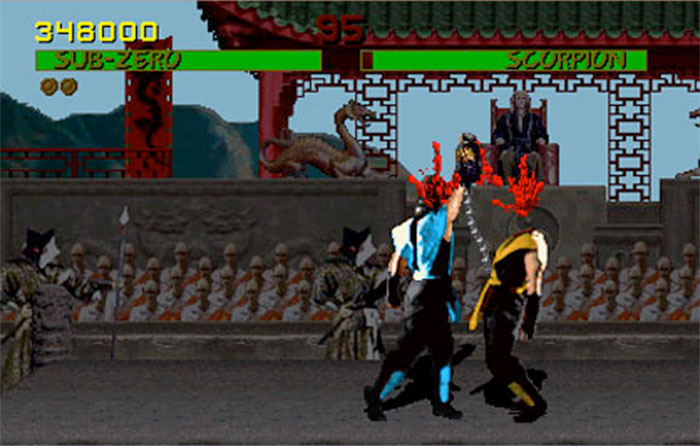
This is the same argument that is made about violent video games. There have been some studies that claimed violent content could lead to increased aggression. But, these studies are usually debunked since they ignore other factors such as school/home life, health, education, etc. People can react to content differently. (Even within the APA, many disagree about the effect taboo media has on people) And while people can have an emotional response to art, it is a unique experience for everyone, and what one gets out of it may vary. Individuals need to be held responsible for their own actions. This is typically why we do not blame media for causing social problems. In most cases, people can distinguish fiction from reality unless they have some type of mental illness. This is why most can understand the consequences of their actions. And this is why, typically, people will not engage in behavior they see in fictional media. Almost all examples of people being inspired to commit a crime due to fictional media suffered from some form of mental illness. The most notable examples are Mark David Chapman and John Hinckley Jr. . This is the main reason Japan continues to allow the production of loli/shotacon content despite multiple complaints about it. No one has proven that creating fictional sexual content involving minors is a sign that someone is a pedophile. Nor has there been any proof that people who fantasize or roleplay such acts will carry them out. The issue surrounding sexual assault in Japan is not tied to anime or hentai.
What’s going on in Japan?
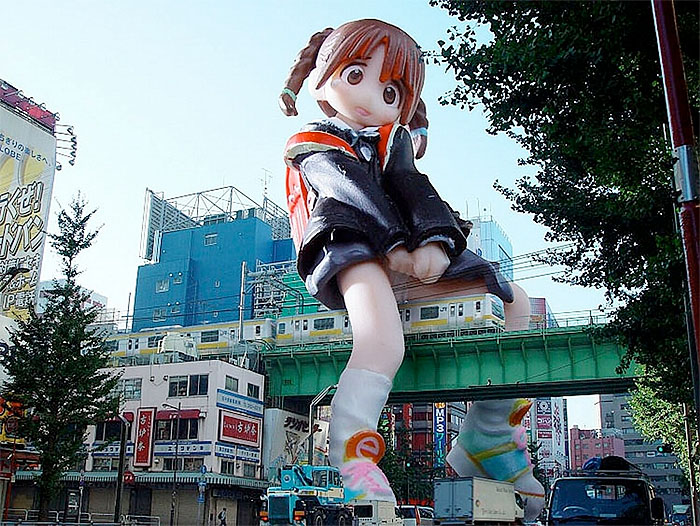
Rising problems in the land of the rising sun
Japan was the last OECD (Organization for Economic Co-operation and Development nation) to outlaw the possession of child pornography. The production and distribution were outlawed in 1999, and in 2014, the possession of CP was made illegal. (The depiction of a fictional character in pornographic situations was not included in this.) Before the ban, many considered the country a safe haven for those who had such an interest.
For too long, there was a poor understanding of children’s rights. Ultimately, that’s why it’s taken so long…By outlawing the possession of child pornography with the intent to satisfy sexual interest, we make it harder for people to trade in such material.
(Kiyohiko Toyama, Reuters)
In some sense, the country still is. While it is illegal, the law is not enforced consistently. There are several legal loopholes people use to avoid criminal charges. Chaku Ero, “which means erotically clothed” (Stacey Dooley, Is Japan turning a blind eye to paedophilia?), is a type of soft-core porn. There is nothing inherently wrong with this practice. But the fact that many use it to get around the CP laws and film girls and boys as young as six years old is a reason for concern. Despite sexually suggestive filming of minors being illegal, many get away with this practice because Japanese police officers have to identify the individuals in these tapes. They have to prove that the person was a minor at the time the film was produced. Then criminal charges have to be brought forward. In the case of sexual abuses against minors, charges are rarely brought forward. This is because some children’s parents are the ones allowing them to be filmed. Once again, this problem is not unique to Japan. Most cases of sexual abuse are not carried out by a stranger but a family member.
Most child sexual abuse happens within the family or extended family…Uk and international estimates put it at 70 to 80% occur at the hand of family members. We can’t be sure of the exact number. That is why it is so hard for police to stop it.
(The Paedophile Next Door {True Crime Documentary})
This is why police officers often cannot prove this beyond a reasonable doubt. So, nothing is done despite many in Japan being aware of the issue. Reporter Stacey Dooley covers this and many other questionable sexual practices found in Japan.
We Too

If one researches the reported cases of sexual assault in, Japan they will see that the number of cases is relatively low. (It appears that psychological abuse and physical abuse is more common then sexual abuse in Japan.) There are multiple reasons for this. Studies suggest the most prominent reason is that such crimes are under-reported. The reason for this is that most victims that come forward are often publicly shamed. News and social media outlets make this a more common occurrence. (Wow, isn’t this just like Tara Reade?) But, even when they work up the nerve to come forward, the police typically do not take the claims seriously.
Shortly after, Shiori Ito—a young reporter date-raped by a prominent journalist—shared her story in the documentary Japan’s Secret Shame. She expressed that the police did not take her case seriously and employed abusive interrogation practices. One tactic stood out—investigators forced her to lie down on the floor and re-enact the assault. The incident was retraumatizing; “They were asking ‘was it like this?” and taking photos,” Ito recounted. “That was like a second rape.”
(Beza Zenbe, Cracking Japans Systemic sexual abuse culture)
The legal system is probably the most problematic issue in all of this. In the instances where officers would take these incidents seriously, they often could not do anything. This is due to how the laws in the country are structured. Until recently (2017), certain forms of forced sex did not count as rape. (Oral and Anal) And even now, penetration by a foreign object does not constitute rape. But in a couple of instances when charges are brought forward, individuals allegedly avoided them due to their connections to influential individuals. (Online pressure rarely brings them to justice in cases of sexual assault.)
Following the documentary, Ito became a symbol for survivors throughout Japan, with Time (magazine) calling her one of the most influential people worldwide…Yet, her rapist has not been charged; officers were planning to arrest him in 2015, but the chief investigator called it off. Because Ito’s rapist had connections to political figures, including then-Prime Minister Shinzo Abe, some believe that government officials shut down any potential criminal trial. Ito’s rapist is also appealing the civil court’s decision, threatening her small victory.
(Beza Zenbe, Cracking Japans Systemic sexual abuse culture)
With Japan’s clearly documented history of sexual abuse, it makes some wonder why anyone would defend content like Miss Kobayashi’s Dragon Maid or pornographic content.
Why would anyone defend this?
In 2016, the UN raised concern over the graphic pornographic depiction of rape and CP in anime’s and manga’s. To try and disincentives such content, the UN proposed banning it. Japan’s Women’s Institute of Contemporary Media Culture responded by saying this would cause more harm to women. This was because much of the content the UN was seeking to ban was, in fact, created by women. Until 1986 women in the country were not allowed to apply for many of the positions in the workforce. Working as a mangaka for many women was the only way to build a career in a male-dominated workforce. Most people are already aware of Japanese women’s work in the shoujo genre. Few are actually mindful of their work within the josei, hentai, and ecchi genre. This is because these types of genres (mostly hentai and ecchi) will not be displayed publicly. This is obviously due to their mature subject matter.
Now some people may be confused why women would produce this type of content or defend it. This is because many used this as an outlet to vent their frustrations. It is important to remember that many of these women possibly experienced or knew someone who had been sexually abused. In most cases, this was their only way of speaking out against such traumas.
Among the manga for women in our country, there were titles that took up the history of women’s sexual exploitation and slavery. “The Cliff For Those Would Be Parents” by Fumiko Sone was one such work. Against the backdrop of the real history, it is a work that paints the life of a girl who lived in poverty and was sold into service as a prostitute for the Makunishi Harem in Hokkaido’s Muroran, and how she lives through the experience.
(Reddit, Translation of JWICMC response to UN)
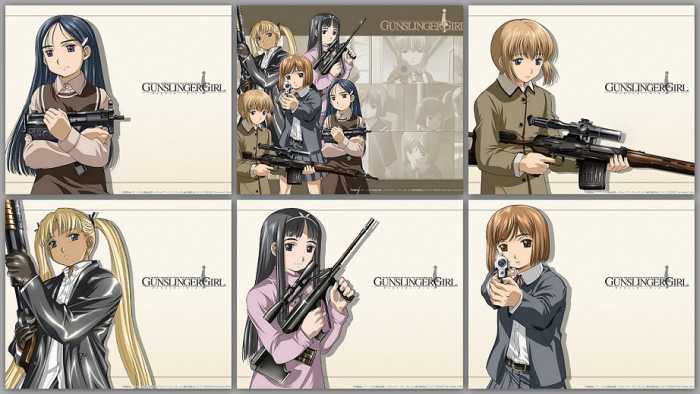
The other reason should be evident, though. For some, this is their sexual fantasy. And because this content is either taboo or illegal, they express these desires the only safe way they can. It should also be noted that many Japanese mangaka’s get their start creating erotic works. (Not a safe for work link.) Some series like Gunslinger Girls and Hellsing started out as hentai before being reworked into mangas and animes. This is also not unique to Japan either. Many western authors have a history of writing erotic fan fiction before getting published as well. 50 Shades of Grey and a Pound of Flesh started out as erotic fan fiction of Twilight. (Many western fan fictions also feature minors in sexual situations similar to Japanese hentai. There are also depictions of rape, BDSM, and underage girls in sexual situations with adult men. A lot of this content is also produced by women.)
Erotic fantasies versus sexual abusers
Deviant Desires do not = Deviant Behavior

People often believe that if someone enjoys depictions of deviant behavior, they are a deviant themselves. Many psychologists/therapists initially thought this as well. When patients talked to their therapist about their rape fantasies, many therapists believed it was an unconscious desire waiting to get out. But modern psychologists, sociologists, and therapists have since changed their opinion on this. Journalist Micheal Castleman writes there are three theorized reasons for these feelings. They are sexual blame avoidance, sexual desirability, and sexual openness. (These theories are based on studies involving women exclusively) Sexual blame avoidance is the most commonly claimed reason. This usually manifests when someone feels guilt over their sexual feelings. These feelings come out as fantasies about being forced into sex, so they are not responsible for their actions. The theory about sexual desirability could be summarized as a form of sexual narcissism. Essentially the person in this believes themselves to be so desirable that someone would pursue them to the point of forcing them into sex. Ultimately they would tame this person and start a family with them. And finally, sexual openness is when someone feels so comfortable with their sexual desires that they fantasize about anything. (This is what most believe is behind these feelings.)
It should also be noted that therapists point out that these fantasies in no way represent the reality of what rape is actually like. And most patients are aware of that. People can distinguish between fiction and reality because most people can understand the consequences of engaging in such actions. These points are very similar to the ones made by those in the loli/shotacon community.
A response from an actual gay shotacon
YouTuber Shota-Kun made a video directly responding to Noralities accusations of the loli/shotacon community being pedophiles. Much of the video is about their personal experience as a CSA (child sexual abuse survivor) in the community. And how the loli/shota content helped them cope with their abuse. They took issue with how many like to compare the community to pedophiles. As they make it clear in their video, many Loli/Shotacon dislike pedophiles due to being survivors of CSA.
Just like how pedophilia isn’t a thing Japan invented due to anime… pedophilia isn’t something loli/shotacons want to normalize or legalize…loli/shotacons actually hate pedophiles and want nothing to do with them. Most of my mutal’s have MAP (minor attracted person) and Zoo’s (Zoophiles) fuck off, because they just want to jack off to cute anime boys and girls and want nothing to do with those actual pedophiles… it might come as a surprise to you a lot of people into loli/shotacon content are survivors of CSA themselves… So, they too can get off to fictional fetish porn and they usually do that to cope. For those who do not already know or don’t know exactly why some CSA’s cope with something that seemingly sexualizes their own trauma, let me explain. … Basically, getting off to my own trauma kinda makes me feel really powerful. Like I’m not gonna lie, like not only have I gotten over my trauma to the point it is not hurting anymore or emotionally draining. It’s gotten to the point I actually take pleasure from it.
(Shota-Kun, A Response To Noralities From A Gay Shotacon)
Shota-Kun points out that this is different from those who cope with their trauma by lashing out at others and deliberately causing harm to feel better. As he and others, due to their experience, understand how emotionally traumatizing sexual abuse can be. This is also why those interested in fetish sex only engage in that type of behavior with consenting adults. (This would include people who like sexual role play like BDSM. A common practice in aggressive forms of sex involves individuals having a safe word. That way, their partners know when they are no longer roleplaying.) Some may write this off as merely Shota-Kun’s opinion. But, psychologists found this is a likely scenario for CSA survivors and those diagnosed with some form of paraphilia. This is why it is sometimes recommended as a way for them to handle it responsibly.
Being sexually divergent
This is where the topic becomes even more contentious. As psychologists, sociologists, and therapists all admit that there is not enough information in the field to confirm specific theories on paraphilias, those who commit sexual assualt, or proper treatment for sexual assualt victims definitively. But, many make a distinction between people who have divergent sexual fetishes, those who suffer from paraphilias and actual sex offenders. This is because people who engage in divergent sexual fetishes often receive consent from their sexual partners. This is why many believe those who masturbate to loli/shota content or roleplay other sexual fantasies (BDSM, Furry, and Rape) will not actually engage in such behavior. As they get consent from their partners first. (Or find other means to handle such sexual urges.)
Repeat sexual offenders often have in common strong sociopathic traits. A meta-analysis of 82 recidivism studies including 29,450 sexual offenders by Canadian researchers Karl Hanson and Kelly Morton-Bourgon identified antisocial orientation as the main predictor of recidivism. More recently, Heidi Zinzow and Martie Thompson of Clemson University provided further evidence that the main individual characteristic differentiating single from repeat offenders is the presence of antisocial traits in the latter group. Some sexual aggressors, in other words, are probably congenital, sociopathic norm violators. They are true “others.”
(Dr. Norman Sphancer, When Men Attack: Why (and Which) Men Sexually Assault Women)
Individuals who are not repeat offenders are typically opportunists. This is why we will often see sexual assaults happen on college campuses or around bars. The fact that the victim most likely will not remember the encounter, one time offenders presume they can get away with it. Repeat offenders often have some form of antisocial personality disorder. Most psychologists and sociologists differentiate them from those with a paraphilia. This is because people with a paraphilia typically recognize the harm their actions will cause. This is why they do not always act on those desires and feel shame for having them.

This idea is supported by Dr. Milton Diamond, Professor Petr Welss, and Dr. Eva Jozifkova in their study of Pornography and Sex Crimes in the Czech Republic. Over the course of 18 years (1989-2007), they studied the effects pornography has had on the Czech Republic. At this time, access to all forms of pornography is legal. This would include CP. They compared the Czech Republic to three other countries during that same period as well.
Other countries have been investigated to see if Kutchinsky’s findings would hold across diverse cultures and traditions. Three Asian locations studied, Japan (Diamond & Uchiyama, 1999), Shanghai, China (Diamond, 1999) and Hong Kong (Ng & Ma, 2001) with very different histories and social structures from those studied earlier, also found that available government records showed that, while the amount and availability of pornography increased, the rates of sexual crimes decreased. Reassessment of the situation in the U.S. (Diamond, 1999) also supported this pattern, as did studies conducted in Croatia (Landripet, Stulhofer, & Diamond, 2006) and Finland (Diamond & Kontula, 2010)
(Diamond, Welss, Jozifkova, Pornography and Sex Crimes in the Czech Republic)
Diamond and his colleges believe that sex crimes are tied more closely to political strife and economic well-being and not pornography. This is because all forms of sexual crimes did decrease after the legalization of pornography. There was a slight increase in sexual assault in the Czech Republic from 1989 to 1995. But, it is believed to be due to the government shifting from communism to democracy.
The incidence of reported child sex abuse, following this original precipitous decline following the governmental switch in 1989, did increase in incidence for a few years to peak in 1995 and 1998 but then again dropped in number following a downward trend that had begun prior to democratization.
(Diamond, Welss, Jozifkova, Pornography and Sex Crimes in the Czech Republic)
Diamond also notes that people who engage with CP are not threats of becoming future sex offenders. Once the possession of CP did become illegal, there was no increase in CSA. Those arrested for possesion of CP after it became illegal, did not show any signs of criminal recidivism (or relapsing into criminal behavior.)
important to note are recent findings by Swiss investigators that viewing child pornography does not seem to be a risk factor for future sex offenses (Endrass et al., 2009). These investigators checked recidivism rates for ‘‘hands-on’’ child sex-offenders with porn-viewing-only offenders and concluded ‘‘Consuming child pornography alone is not a risk factor for committing hands-on sex offenses….The majority of the investigated consumers had no previous convictions for hands-on sex offenses. For those offenders, the prognosis for hands-on sex offenses, as well as for recidivism with child pornography, is favorable.
(Diamond, Welss, Jozifkova, Pornography and Sex Crimes in the Czech Republic)
It is theorized in this study that most CSA occurs not because of an interest in actual pedophilic content. It is believed the main reason is that children are available and vulnerable. If this theory holds true, it could potentially support the previous idea that 70-80% CSA occurs at the hands of family members and extended family members.
Issues surrounding child pornography and child sex abuse are probably among the most contentious in the area of sex issues and crime. In this regard we consider instructive our findings for the Czech Republic that have echoed those found in Denmark (Kutchinsky, 1973) and Japan (Diamond & Uchiyama,1999) that where so-called child-pornography was readily available without restriction the incidence of child sexual abuse was lower than when its availability was restricted. As with adult pornography appearing to substitute for sexual aggression everywhere it has been investigated, we believe the availability of child porn does similarly. We believe this particularly since the findings of Weiss (2002) have shown that a substantial portion of child sex abuse instances seemed to occur, not because of pedophilic interest of the abuser, but because the child was used as a substitute subject.
(Diamond, Welss, Jozifkova, Pornography and Sex Crimes in the Czech Republic)
Now, this should not be taken as Diamond and his colleagues being in favor of actual CP. They point out that the production of CP always requires the abuse of a child. And the one thing all psychologists agree on is that children cannot give consent in sexual situations. Diamonds and his colleagues concluded that pornographic material did not actually lead to deviant behavior and denounced the production of CP. He believed that alternative methods should be found for those who have such sexual fantasies. He makes clear that the purpose of the study was not to justify the consumption of such content. The reason psychologist and sociologist study such matters are so they can understand the phenomenon surrounding them.
We do not approve of the use of real children in the production or distribution of child pornography, but artificially produced materials might serve. As it is, with restrictions on even materials for the scientific study of the phenomenon forbidden to all but police enforcement agencies, these real life studies are the only way to begin to understand the phenomenon.
(Diamond, Welss, Jozifkova, Pornography and Sex Crimes in the Czech Republic)
It should be noted this study differentiates pedophiles from child abusers, rapists, and people who masturbate to CP. Many would see this as an unimportant difference. But, most psychologists and sociologists do not believe so.
Paraphilia
People often confuse sexual fetishes with paraphilias. They are not the same. Paraphilias differ from sexual fetishes in that it is a “sexually arousing fantasies, urges, or behaviors that are recurrent, intense, occur over a period of at least 6 months, and cause significant distress or interfere with important areas of functioning.”(Roxanne Dryden-Edwards, MD, Paraphilias.) Paraphilias are believed to be an emotional disorder that leads to an uncontrollable desire to act out those fetishes. It should be noted that “urges to engage in coercive or otherwise aggressive sex like rape are not symptoms of a mental illness. Such sexual offending is therefore not considered a paraphilia.” (Roxanne Dryden-Edwards, MD, Paraphilias.) This is why most psychologists and sociologists differentiate child abusers from pedophiles, as most abusers do not actually suffer from a paraphilia. It is believed 3-5% of men suffer from a paraphilia. Within that statistic, women make up 1% of it. These numbers could be higher or lower, as women typically are under-reported for paraphilias. Also, psychologists and sociologists note that most people who have a paraphilia typically feel shame for their desires, so they usually do not self-report. Sociologist Dr. Sarah Goode’s own research into this supports these claims.
Dr. Goode, in the documentary The Paedophile Next Door (True Crime Documentary), criticized how liberally people use the term pedophile.
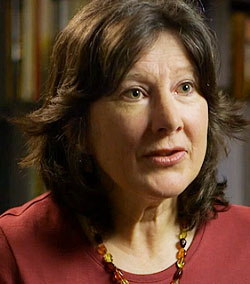
When I started the research, I think I was just like everybody else. Ew, paedophiles. Horrible, they harm children. How can we solve this problem? So, I put out questionnaires, and I got a whole community sample of men to answer them. So, this was the first time research like this had been done on paedophiles. Who are not offenders, they’re not in prison, and their not in treatment. They’re not known to anybody. And one of the things I found really baffling is within the paedophile community, there is this group of men we do not know how many and what proportion of the group they are, but men who are committed to living a law-abiding lifestyle… When we think about paedophiles, we automatically assume child sex offender as if they’re interchangeable.
(Dr. Sarah D. Goode, The Paedophile Next Door {True Crime Documentary})
This is a controversial opinion to have. Dr. Goode even believes that these views are why she was removed from her senior lecturer position at the University of Winchester. She was also removed from her position leading the Research and Policy Centre for the Study of Wellbeing in Communities. But when looking at the studies by Dr. Goode, Dr. Diamond, Dr. Edwards, and the research by Karl Hanson and Kelly Morton-Bourgon, there does appear to be a distinction between sex offenders, paraphilias, sexual fetishes, and rapists. There may be overlaps between them, but they do not appear to be the same and should be responded to differently.
Sexual fetishes closing thoughts
Since much of the studies on these topics are just theories, it is nearly impossible to say anything definitively on the subject. The current theory on this topic, though, is that people who have sexually divergent fantasies do not suffer from any type of paraphilia. This is because these desires do not get in their way of interacting with others in social situations. It also appears that they are not at risk of becoming a sex offender. Despite some having fantasies about situations that would be illegal in reality, the people who have these fantasies do not want to actually engage in these actions. It is simply a form of sexual roleplaying. This differs from those who engage in criminal sexual behavior like sexual assault, as sexual role players get consent first. Pornography is the best evidence for this being true, but there is another less inflammatory example that might convince people.
Even the younglings?
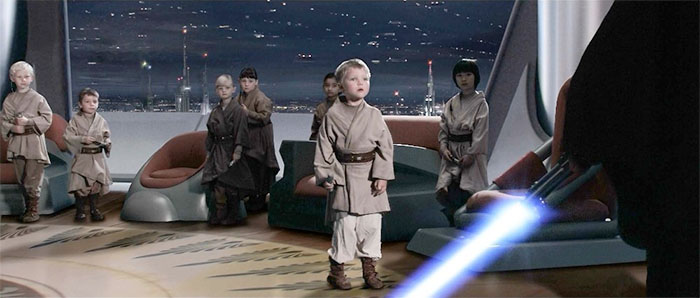
In Star Wars Episode 2: Attack of the Clones, actor Hayden Christensen takes on the role of Anakin Skywalker. In this film, Anakin commits a mass murder of the sand people after he finds out they tortured and killed his mother. Despite this we are not seeing calls for the actor to be held accountable for these crimes. This is because it is a fictional role in a fictional universe. The actions Hayden Christensen’s fictional persona carries out do not actually reflect his real feelings. And Hayden is probably aware of the consequences of such actions in real life. (I’m assuming. I don’t actually know Hayden Christensen.) This is likely why psychologists and sociologists differentiate loli/shotacon, furries, and people with rape fantasies from actual pedophiles, zoophiles, and rapists. The people who engage in these sexual fantasies can gain pleasure from roleplaying these dreams out with others. Much in the similar way that actors can gain pleasure from playing a villain. (I Imagine actors are not getting sexual pleasure from playing a villain, but who knows. People can literally get aroused by anything. There are over 500 paraphilias documented.) It is not uncommon for people to roleplay, whether for a dramatic performance, game, or sexual purposes. This why people will always have trouble accepting the argument that fictional content can have an effect on reality, as it would be the death of fiction.
Climax
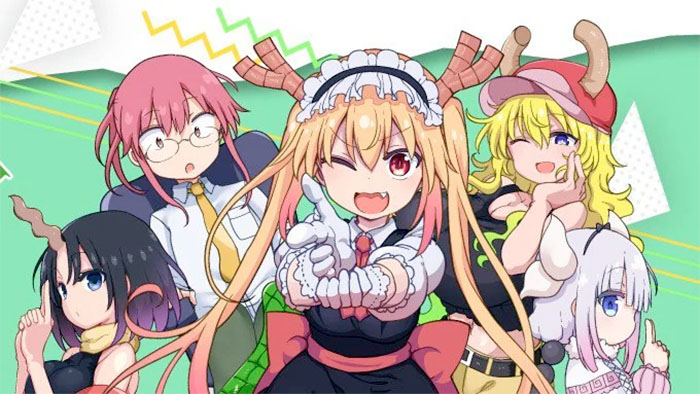
To no one’s surprise
Like with video games, movies, and literature, what type of emotional response someone may have to this type of content will vary. And the reason for enjoyment and dislike of certain content is going to be unique. Not all people who enjoy loli/shotacon content are CSA victims. Just like with rape fantasies, BDSM, and furry fetishes, it is generally agreed that the people who engage with this type of content are not going become sex offenders. (In most cases, psychologists find they are more fulfilled sexually.) As often, this type of content does not actually depict what sexual abuse is like. There is also hentai that is meant to be reasonably accurate in showing what rape is like. But that is usually the point. Since most mainstream outlets will not publish that type of content, many Japanese artists will self-publish that type of art. They do this so people can understand how dehumanizing rape is. (I am not going to link to hentai examples, but mangas and animes like Berserk, Perfect Blue, and Goblin Slayer depict rape in a dehumanizing way. It is not meant to be glorified or enjoyed for masturbatory purposes.) Whether someone is creating or engaging with this content for masturbatory purposes or to display the actual horrors of sexual abuse, this is not proof of them being a pedophile or rapist. The actions taken by people who engage with this content are simply role-playing and nothing more.
Don’t like, don’t watch
This is why many loli/shotacon, furries, and people who enjoy these fantasies make an effort to differentiate themselves from those who engage in criminal behavior. These sexual fetishes are not going to be to everyone’s taste. That is understandable. That is why these communities often tell their critics to not engage with this type of content if they find it disturbing.
You offended me

If parents are concerned about their children seeing inappropriate content, they can block it through parental features. Creating these artificial moral panics is dangerous for those being accused. It serves no purpose but to impose another’s virtues on others. And the argument that offensive content is to blame for the moral corruption of society is unfounded. This argument has been debunked multiple times and is nothing more than virtue signaling.
We have already seen what happens when artists are forced to adhere to what others deem is acceptable. For many years depictions of LGBTQ characters were forbidden in children’s television because some found it offensive or thought it would corrupt children. If we maintained these beliefs, shows like Steven Universe, Owl House, Arthur, and multiple Japanese animes could have been canceled simply because they offended people. It is not an artist’s responsibility to please everyone. Freedom of expression is one of the reasons people find art so appealing. If people do not like what is being said or depicted they do not have to purchase or interact with that content.
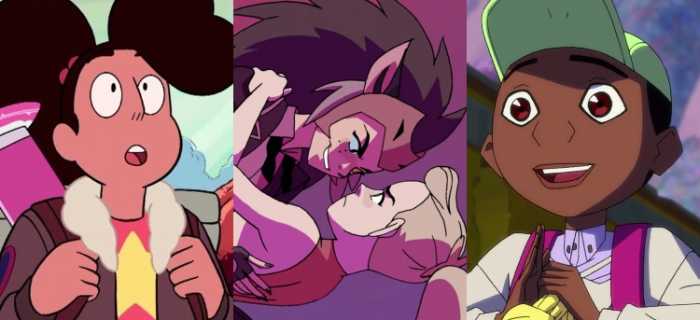
Freedom of speech
The American Civil Liberties Union came under criticism when they began defending “hate speech.” Many claimed that the organization “is abandoning its traditional commitment to free speech and other classic civil liberties and is becoming a ‘trendy.’ liberal organization primarily concerned with equality and civil rights.”(ACLU, aclu.org) But that is not true. Both the ACLU and JWICMC understand that protecting freedom of speech means protecting all forms of speech. They make it clear they will defend all speech, even when it offends others.
But the answer remains the same. The ACLU is committed to the principle of free speech today,… And we are specifically committed to the proposition that the First Amendment’s guarantees (like those of the rest of the Constitution) apply to all, not just to those with whom we agree.
(ACLU, aclu.org)
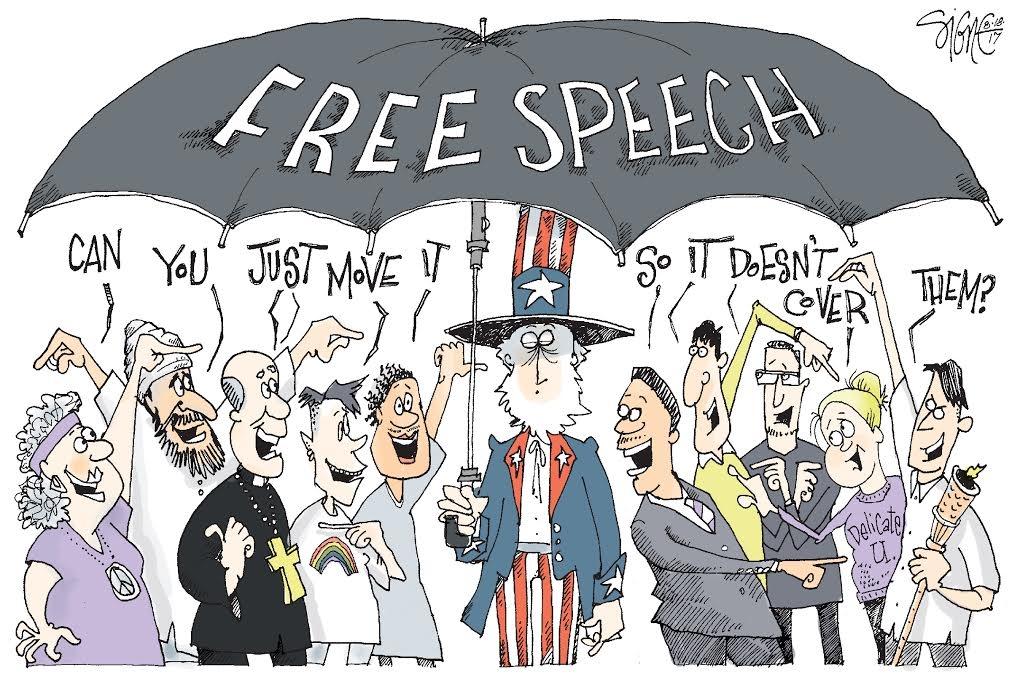
The antithesis to free speech
This is the problem with cancel culture. It is inherently antithetical to any form of open expression of personal beliefs. Just because people find something objectionable does not mean it is not protected under free speech. Others do not have to agree with what is being said. Nor do they have to support it. But no one has the right to stop people from expressing themselves. (Be it political, social, or artistic.)
Double-edged sword
Something that needs to be understood about freedom of speech is it protects everyone’s ability to express themselves. People cannot choose to simply exclude someone from this rule because they have written, said, or drawn objectionable content. It is understandable why people want to take away such a right from others when they feel free speech is being used in bad faith or irresponsibly. But these people still have this right to expression. This is the price everyone has to pay if free speech is to be maintained. If certain content is offensive, people can simply not engage with it. Many take issue with this idea, as they believe ignoring bad behavior can lead to future consequences. That is why criticism exists. Do not silence others because their words are disagreeable. Instead, challenge their points through debate. This is a result that cannot be achieved through cancel culture. As it forcibly exiles those deemed unfit by the majority. When this happens, the ability to challenge those points is erased. And those exiled are more likely to hold onto those views since they were never appropriately challenged. This is why we cannot allow this practice of canceling to continue, as it is inherently antithetical to the idea of free speech. It does not protect anyone. In many cases it can put people in danger.
Dangers of cancel culture
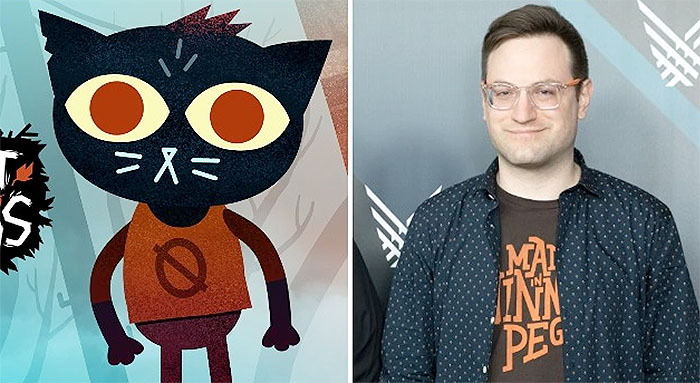
It has already been mentioned how individuals like Projared and David Silverman almost had their careers destroyed simply for being accused of sexual misconduct. They were lucky, as they were able to prove their innocence, and start rebuilding their career. Not everyone gets that chance. In August, 2019 Alec Holowka was accused of physically and emotionally abusing another game developer. These accusations were made on twitter. He was almost immediately fired from the company he worked at, and no one knows if the accusations are true or not. (Further investigation into those accusations has proven much of it to be false or questionable at best. Article, Video) We may never know the whole truth, as four days after being accused Alec took his own life.
Kyoto Animation and Coolkyousinnjya
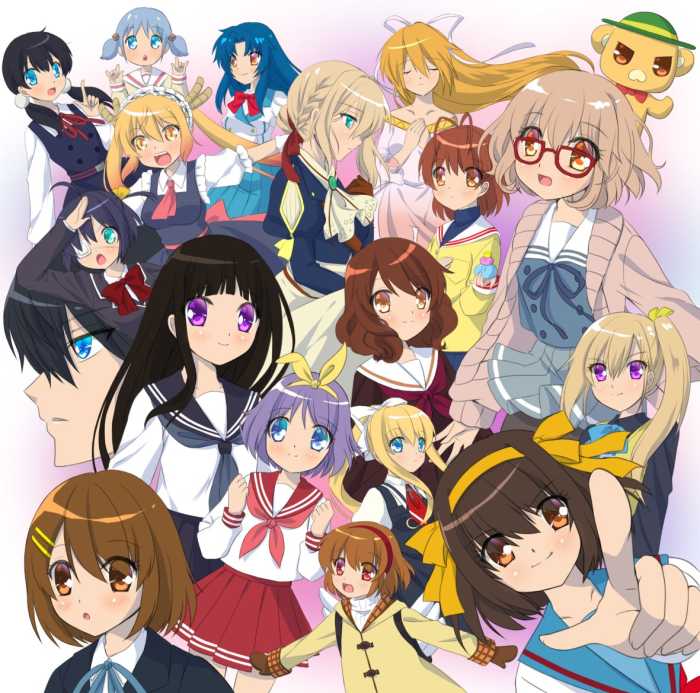
It needs to be understood that Kyoto Animation was nearly burnt to the ground because someone believed the studio was plagiarizing their work. What would happen if people believed the studio was creating pedophilic content? We already saw this hypothetical play out in 2016 with the QAnon conspiracy theory now known as pizzagate. Someone believing this conspiracy theory traveled to the restaurant and fired a rifle into the building. Accusing a company or artist of being pedophiles is dangerous and puts them at risk of being physically assaulted or worse. This is why we cannot allow such behavior on Twitter, Facebook, or YouTube. If there is credible proof of wrongdoing it needs to be brought to the proper authorities.
Closing thoughts
When considering that individuals with powerful connections were able to evade the law for multiple years, it is understandable why people are tempted to rely on cancel culture to carry out justice. But this is not how we should be excercising the law. (It is debatable if people on Tweeter and Facebook had any influence in getting individuals investigated.) A post on Twitter, Facebook or a YouTube video should never be the basis for someone being fired from their job. Nor is it the place to make accusations about anyone. Cancel culture is a dangerous practice that can have dire consequences. It for this reason we need to resist the urge to make such dangerous claims online.
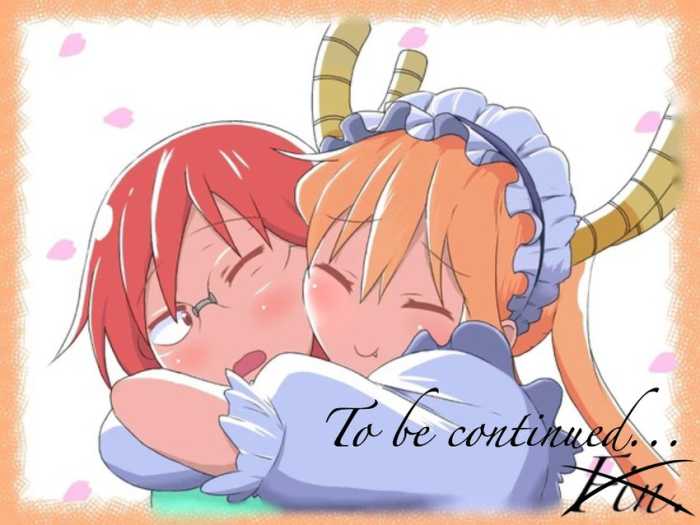
What do you think? Leave a comment.







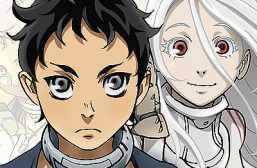


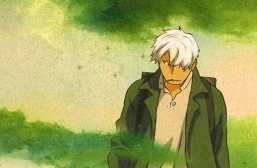
This is the article I will post everywhere whenever people discuss cancel culture in relation to anime. Thank you!
Why do people spend such amount of time to cancel media?
People doing those things are typically part of “cancel culture” where they get off on shaming people and things, getting things cancelled, etc… because they want to feel important. Most of the time they don’t even watch the thing they are complaining about and if they succeed, will just move on to the next thing to get cancelled. The best way to react to them is to ignore them. They want attention. Don’t give it to them.
Strong article. My opinion. Most anime is for 15 y/o and over oversexualisation in anime is normal and if your going to cancel one of the most succsessful categories of shows over you not being able to want to see lewd things then dont watch anime at all. If this is the case how about we cancel “cancel culture” because if you don’t like something you try to emotionally blackmail people to either change or don’t have a opinion.
I see your point, but the culture we live in is successfully “cancelling” things. Anime seems like it would become an obvious target. Kids can get there hands on it and be influenced easily even if the target age is 15+. If you blanket cancel anime then it would be harder for kids to see it. The point I want to get across is that if we are canceling Lola bunny today it will eventually reach something like anime. It seems like the next step or at least several steps down the line
Cancel Culture is not real.
It’s especially not real with anime, because Japanese companies tend to no care what the Western audience likes or dislikes.
Well, Japanese companies do cancel things (see: Act-Age; also literally anybody who gets caught doing drugs), but it is far removed from the Western context.
Also, I don’t necessarily 100% agree with your sentiment. While I think taking people to task for being shitty people can be useful, I think sometimes “cancel culture” does go above and beyond that. As Mark Fisher once wrote, the “Vampire Castle” of what was then “callout culture” can also end up essentializing people as one thing, which forecloses nuance. (Moralizing perspectives also fail to address the structural problems and ideologies in our society that produce the individual. Scandal and moralizing discourses, by focusing on the individual, miss the big picture.)
Cancel culture IS a thing and it’s been a thing for a long time, such as what happened to Roscoe “Fatty” Arbuckle. The only new thing nowadays is that people who can’t afford to not work (eg not celebrities) can be cancelled now.
You’re half right. The Japanese don’t give a damn about Western moral standards.
Yeah, they have weirder ones. Mainly your career is over of you’re caught with drugs.
I think cancel culture is scary because you lose a percent of your community.
I’m so glad I’m not a part of any fandoms 100% anymore.
Like yeah, I watch anime every once in a while & I like to rewatch some series from the beginning if it’s been a long time. But when it comes to talking with other fans of the same series I’m the biggest introvert fan now. I’ll happily talk about a series if it’s my hyperfixation / hyper focus of the month but if I’m not actually invested in what people are talking about I’m just gonna leave off to my happy corner to do my own thing.
It’s so difficult to be ‘woke’ about anime. It’s anime, a culture that dedicates itself to indulgent, fantasised portrayals. Of course it’s going to be problematic in more ways than one, but I also think there’s a distinct line between supporting a problematic thing and just accepting and enjoying a thing for what it is.
P.S I’m not defending the negative aspects of anime culture or claiming we should ignore them, but it is what it is.
People comparing fiction with actual, horrible crimes is something I’ll never understand and we shouldn’t be making concessions to things that aren’t even real on the off chance it offends some person overseas on social media.
I think dragon maid was great, im not taking life changing lessons of the show and i know that the original author just can’t keep his fetishes away from anything that he makes.
People are upset about lolis in Dragon Maid? Is this their first time seeing an anime? Like, throw a dart and you’ll hit some loli bait in anime.
I am not super into anime, but from what I have seen, how come there aren’t many black people represented in their stories?
I think it just has to do with local representation honestly. For example, where I am in the US there are so many diverse faces I couldn’t guess where everyone’s families came from. We are all originally from somewhere else. But, in Japan and other countries not as multicultural you tend to see significantly less diversity. It is probably just a factor of drawing what you see and are used to. There may not be anything more significant in it than that. I’ve actually been traveling and wondered why it felt weird, then it hit me. If you live in a society with a lot of immigration you really don’t think about how homogenized other areas can be until you actually see it yourself. It feels a little eerie to me since I am so used to seeing so many different peoples.
See, many animes take place on Japan which means that there aren’t many black people. JoJo for example does have many since theres a part in Egypt.
Prior to Dragon Maid, as far as I know, the only anime that was ever #cancelled was New Life+: Young Again in Another World, and that was because the author was so xenophobic that it sparked a diplomatic incident, which is a decision that’s unsurprising at the very least.
It’s art and entertainment, everyone is entitled to their opinion, but that’s it, let people enjoy what they like and stop virtue signaling to inflate your ego.
Way back when I was doing my A-levels I knew a girl who came from a family of Jehovah’s Witnesses. Sometime around her eighteen birthday she plucked up the courage to tell them that she’d grown distant from their faith and no longer wanted to attend their kingdom hall. She was promptly disfellowshipped – excommunicated by her family for having a different take on the world – cancel culture doesn’t seem too different to me.
Isn’t that because it behaves very much like a religion in so many ways, hence why the groups are so closely knit together.
I too am an Ex JW…and I have seen how similar the the mindsets are…people behave like zealots (ex-communication, heresy, mob rule, original sin, moral superiority, etc)
I used to be a big part of (what was then called) call-out culture. i was so used to seeing the abusers in my own life get away with zero accountability, while victims were degraded and dismissed. ‘believe victims’ or ‘we believe survivors’ or however you want to say it – it felt like a lifeline when you were used to dealing with police who never took victimization seriously, and cowardly enablers flocking to defend disgusting men because they identified more easily with rapists than actual victims. it felt like we had real power over abusers for the first time in our lives.
I certainly understand those type of feelings. There a plenty of example of people using their power to abuse those who cannot defend themselves. It is part of the reason I did so much research into this. Shiori Ito’s and Tara Reade are good examples of powerful individuals using the power to prevent us from getting to the truth. But, I don’t know if you’ve been following the Anthony Broadwater situation. He was convicted of a crime he did not commit in 1981 and spent much of his adult life in jail for something he did not do. I understand why people would want to rely on cancel culture. But based off what i’ve seen it does not really help victims get justice for the crimes committed against them. If anything it appears to cause more harm. I believe it is far more important to fight for criminal justice reform.
The question of whether or not you should watch or indulge in good art made by immoral people, or with controversial topics (like DM), is frankly an extremely loaded question that is extremely complicated. The idea seems straightforward at face value.
Of course you wouldn’t want to support someone who does immoral things, so take away your funding and they wont be able to do the immoral thing, but what is the severity of the crime or what if that person has someone who depends on them to survive, are you going to kill an innocent person just to punish one person.
This is just scratching the surface but the point is that life and people are complicated, so perhaps you should just not worry about the morality of the creator and just consume content that you like, but if you do that then you are enabling the immoral person potentially. Honestly I tend to teeter totter when it comes to this idea, sometimes I think you should withdraw support and raise awareness and prevent the person from continuing their immoral behavior but then others I think differently, because I dont know anything about them or their circumstance, they may even have a good reason for what they do, so what right do I have to tell them what to do and what not to do based off of my own moral values which may not even be universal? Its an impossible conundrum that I can never settle on a clear answer to.
My point is this, morality complicated, life is complicated, people are complicated, society is complicated, the world is complicated, and no one has all the answers and it is straight up immoral to guilt others into taking action against another person when they themselves dont have all the information. In my opinion, it is never good to make decisions without at least having as much information as possible. Judicial Courts in Japan have more of a right to judge someone, in my opinion, than some guy on a computer discussing someone who lives over on the other side of the planet, but that’s just how I feel today, I might feel differently tomorrow, because the concept of morality is its self a vague concept that I can never really settle on. I just dont know so I dont think it would be a good idea for me to tell others how they should think and feel about a situation, not when I myself dont have the answers. In general I dont think that mob mentality is a good thing, I think people should instead decide for themselves what is wrong and what is right and act accordingly.
I’m rambling I know.
About the cancel culture thing, there is one thing that’s called Blackstone formula which says “it’s better to let 10 criminals scape rather than convict a single innocent person”
A cancellation or a prison sentence can actually ruin someone emotionally, specially when they know that the accusations are false, because lets be honest, it’s easy to accuse someone of murder but really hard for that person to prove they didn’t murder anyone.
People forget that the original author is a literal adult manga writer specializing in oneshota.
People are more and more reactionary today then years ago, this community is obsessed to an certain extent with shows getting cancelled.
The reason why this series matters to some is because it’s about found familly, about stating that we all need close friends wether we know it or not, and that it doesn’t matter where they come from as long as you enjoy spending your time with them.
Don’t connect with that theme? Me neither, but no need to trash the fans who do, for whom this has been a part big or small of their personal journey.
We love Japan hopefully they never change.
Noralities is such a mixed bag for me. On one hand there are times she’ll make really good points that I’ll appreciate.
However, there are times in her videos that she’ll say some weird outlandish stuff that just annoys me.
Most animes are considered 13+. As such, the suxualisation is ok for some reason.
Seriously the imagery is along the same lines of other things getting canceled. I’m not advocating we cancel anime, just why isn’t it a target? One point that was brought up was it is designated for 13+, but that doesn’t make sense.
With more media becoming canceled, I’d imagine you will have to eventually defend the things you care for. If it’s anime what’s the defense.
I think anime getting “cancelled” is just a boogeyman that people have been conjuring up and that it doesn’t really have any basis in reality. Sure, there’s always going to be some people that complain about content in media, but that really hasn’t led to anything in anime thus far and I don’t see any reason that it suddenly will.
Since I focused mostly on western views of “cancel culture” and not Japanese I can somewhat understand why you believe “cancelling” in anime isn’t real. But it very much is. There have been multiple times when anime’s have been pulled from production or changed drastically for controversial reason. Someone mentioned how New Life + was cancelled due to its controversial depictions of China and Korea. But it was not just the anime that was cancelled, but the book was as well. It is now impossible to purchase any content associated with New Life + from normal retailers. But this is not the only time. Mushoko Tensei’s anime has been drastically altered from it’s web novel version, with several chapters not appearing in the anime. There have been multiple calls in Japan for the anime to be pulled as people believe it violates several broadcasting laws. Also a chapter in the web novel were one of Rudeus’s sons ( Ars age 11) marries and has a child with his aunt (Aisha, who would be in her 30’s at this point) was pulled after fan back lash. Recovery of an MMO Junkie was pulled from airing and streaming in several countries due to the creators anti semitic views. Interspecies Reviewers was pulled from production as many in Japan found the content offensive. Today I went up in flames a manga about a internet troll was cancelled in Japan. To say “cancelling” is not real is frankly untrue, as there several examples, whether you’re talking about anime, music, video games, or movies. (Sarah Silverman, Louie C.K, R-Kelly, Manhunt and Jane Fonda are all examples of cancelling in America.) Cancel culture is not a new phenomenon, as we had the Red scare in Hollywood where many filmmakers and writers were blacklisted.But we can go back even further and look at Socrates who was forced to drink poison due people in Greece believing he was corrupting the youth with his views. It does not matter where in the world or what point in time we look at there is always some example of persecution of those with taboo, offensive, or unpopular views. Now I personally believe we’re not in as a bad a state as we were in the past. But cancel culture continues to be a problem and shouldn’t simply be ignored.
Read the article. Several recent cases.
The secret here is just enjoy the show and don’t use Twitter.
See, I see people spout things like this all the time. In general, I do actually agree with it.
But the problem is that this is exactly what the attitude was towards Tumblr over a decade ago and other social media sites before it and all that it accomplished was allowing the crazies to convince the not quite so crazies without opposing viewpoints being added, which is itself responsible for the rebranding of the moral outrage crowds that pushed “Video Games cause Violence” in the 90s and early 2000s and the “X Music belong to the devil” in the 80s and earlier with “Normalisation Theory” becoming widely accepted.
Meaning when they say “If you expose someone to this viewpoint or thing I dislike, it’ll become normal to them and they’ll do/become x!”
The doublethink they use to justify “normalisation” as being different from those two when they come from the exact same spot and use the same arguments is amusing, I’ll admit.
The criminalization of art overshadows the conversation. Almost no matter what a drawing, book, song etc. could depict (and I have to stretch here to think of exceptions, like writing a novel that doxxes your neighbor and accuses them of a fictional murder), I don’t believe fictional expressions of the mind should bear legal consequences so long as segregated from public display, as obscenity is itself a conservative artistic-legal concept. To my mind the idea/threat of imprisoning people for “reinforcing harmful ideas” is a very distracting elephant in a room full of reasoned criticisms and objections.
What a wonderful article! Very pleasing read, reasonable and well researched arguments. Will share with my friends who frequently engage in cancel culture.
The problem with the idea isn’t the “cancel” part, it’s the “culture” part.
Like…I can’t imagine anybody arguing that it’s not okay to cancel anyone ever. That social ostracism, no matter the reason, is inherently unjustifiable. That seems not only to be silly, but to be a violation of people’s freedom of association. We don’t HAVE to rub shoulders with those we find morally reprehensible.
But at the same time every right has limits, even free speech, freedom of religion, the right to bear arms, all the big ones, so why not free association? Surely there also comes a point where frivolous blacklisting and shunning becomes unjustifiably cruel and authoritarian, where “free association” ISN’T really free because the bans on providing aid and comfort to the cancelled are enforced through social pressure and fear of being cancelled yourself.
But where’s the line? Like, I’m fine with Weinstein and Spacey not having careers anymore, even if they somehow manage to beat their charges through courtroom theatrics and the mysterious, convenient deaths of multiple Spacey accusers. There’s more than ample corroboration of the multiple, serious accusations against them for at least the court of public opinion to convict, and them to be socially treated as guilty…a bar for which I tend to use the standard of clear and convincing evidence.
But in so many other cases it’s not so cut and dry. People get cancelled to the point of destroying careers, reputations, being forced out of businesses they built or in a few extreme cases driven to suicide by single allegations, sometimes of shit that’s not even illegal, or trivialities like saying a naughty word or holding a view that’s not considered woke enough.
And the real problem is that cancelling has practically become a sport, and a way to demonstrate your own righteousness. We made it a CULTURE, rather than a reaction to genuine, extreme outrage at a person, people feel incentivized to seek out reasons to cancel, to watch others like hawks for violations, to peacock their wokeness by showing how quick they are to presume guilt and act accordingly.
Cancelling has a place in society… as a last resort for dealing with truly poisonous, intolerable people who have either dodged criminal justice or managed to be unbelievable shitbags whilst not technically breaking the law. But we live in a time when some people have decided that all social faux pas are equally serious, and all are deserving of the maximum penalty that can be handed down outside a courtroom without being itself a crime. That can’t continue.
There’s nothing wrong with criticism of individuals. The problems arise with the capitulation of those in authority to the demands of a tiny mob of permanently irate people on twitter
Yes, it’s not equality if a large “movement” targets individuals, puts pressure on them, their employers, people who use their professional services etc.
Cancel culture is very connected to the current political climate.
Hate speech is not free speech. Racist nostalgia, words, statues, were all part of a past that no longer exists and perhaps is no longer needed.
Those from the right who accuse others of censorship use that to in effect, censor others, or force others into self-censorship, the worst censorship of all.
I think ultimately it’s not about free speech but about power. People with significant platforms and influence present themselves as victims and suggest that those who largely do not have access to anything like the platforms and influence exercise unwarranted power.
Occasionally there will be a sorrowful reference to some unnamed individual who lost a job, and then we’re back to JK Rowling or whoever, who is in no danger of being cancelled. And by focusing on the mob and their supposed power, we stop looking at the power structures which lead to unnamed individuals losing their jobs, or harassment to continue, or the role that those with significant platforms and influence contribute to the exercise of state restrictions on free speech. But yeh, the mob.
Has Ms Rowling said something objectionable or controversial?
The sexualization in anime goes a bit too far sometimes but I think in some cases It’ll be fine.
I think the anime community is super reactionary and gets extremely defensive and panicky when anyone suggests that maybe some of the stuff people have come to take for granted is worth a more critical look, so they’re talking up the threat of anime being cancelled for being problematic. There’s also occasional fabricated out rage like AoT.
Powerful racists are powerful because their racism is something that is liked, or at least tolerated, within the supporting base. Anime is the same, with its controversial content being liked, or at least tolerated, by the viewerbase. Those outside of the base can’t “cancel” anything, because they’re not the base.
These are my unfiltered feelings about cancel culture and offensive media.
“When you tear out a man’s tongue, you are not proving him a liar, you’re only telling the world that you fear what he might say.” ― George R.R. Martin, A Clash of Kings
As a writer freedom of speech is easily one of the most important aspects to what I do. It is not something that should be given up or taken away. It is why I find cancel culture to be so absolutely disgusting. Art and objective journalism cannot exist without freedom of speech. It is why I find it so alarming that artist and journalist are often the ones calling for others to be silenced or are trying to destroy another persons art. I do not respect anyone who engages in cancel culture. It is the reason why despite disagreeing with Noralities and believing that what they are saying could put Coolkyousinnjya and Kyoto animations in real danger; I never once say they should be removed from Youtube, or Tumbler. I criticize them and point out what I believe to be flaws in their ideology. This is not me tolerating their ideas, this is me actively challenging them in the hope that it will bring about change. The same thing is going on with racism and offensive art.
This is the reason in my article I included that quote from the ACLU. As just because the ACLU is willing to defend peoples right to say racist things, it does not mean they are agreeing with those views. They understand that in order to have society where free thought can exist, we need freedom speech. If we started censoring racist views, we also would have to start censoring the rebuttal to those views as well. We would also have to censor all other forms of content that is deemed dangerous. This would mean people who are religious would have a credible claim for the censorship of LGBTQ content as many religions believe that such practices lead to the damnation of ones soul. But, also atheist would have credible claim for the removal of religion as many believe this leads to zealotry.You can do this to any ideology as almost every ideology has a counter argument for why it is wrong or dangerous. Who’s views take precedent and who is correct? We probably will never know. And this why most people believe it is up to the individual to figure this out for themselves. This is why many in the anime community do not push for the removal of lolicon content. They usually criticize it.
Also the reason the anime community does not take the claims of those outside of it seriously is because they often get basic facts wrong about shows or make accusations that are not based in reality. And when people confront them on this they refuse to engage in a good faith discussion. A good example of this is Oreimo (anime where the older brother marries and has sex with his biological sister.) The author makes it clear in interviews that it was supposed to be a joke about the trope “living under the same roof” where for a contrived reason the main hero and heroine live together. Or when the main heroine is adopted into the hero’s family and they eventually become romantically involved. He decided to take the trope further and made the main heroine into the heroes full blooded sister. This was meant to show how creepy it is when two characters who are raised like siblings, become romantically involved. Despite what the author has said and the series being meant as a joke, a lot people believed he wanted to have sex with his sister. This is nonsense as he literally has no sister. How can he have incestuous desires when he has no siblings?
This is not to far off from the reason the lolicon trope was created, as it was meant to be Japanese artist trolling people that believed their art was tied to there real sexual desires. As the idea of writing children in sexual situation was meant to be seen as a joke, as kids often do not understand sexual situations and this often leads to a misunderstanding. My favorite example this occurs in the original power puff girls. Where the girls tell their friend Robin the professor made them by accident. Robin misunderstands and believes the girls where born of an unplanned pregnancy.
But on a more serious note you would not be able to talk about real romantic drama with characters under the age of 18 as any form romantic scene involving minors would be considered pedophilia. You would have to remove any character under the age of 18 from stories and all characters would have to be adults. Which is absurd because when you turn 18 you do not just suddenly develop sexual feelings. love, romance and sex are all tied together and you cannot discuss one with out discussing the other. Most people seem to understand this and is the reason many in the anime community do not seem to care. This why they often criticize how effective these depictions are handled instead trying to cancel it. This also why when we see shows getting canceled it is coming from outside of the community.
Gina Carano and James Gun getting fired from the shows/movies they worked on are good example of the community supporting them, but people outside the community playing a role in deciding what is and isn’t allowed. If you want an example for anime I would say Isekai reviewers as while the general anime community seemed to have no major problems with the content; the general public hated it. So, I would say yes people outside of the community can have an effect on content.
This is largely why I disagree with your comment. As I do not believe it lines up with the evidence I have seen. I could be wrong, but I would need to see some evidence before I change my opinion on this.
Hate towards yaoi and other stuff around LGBT topics usually are incredibly misplaced. In large I can see why people want to see wholesome or good romances that feature productive relationships but not everyone wants that. Plus as a bi guy people really got to stop beating up female fans of it or male fans of yuri which I don’t see as much. Objectification is a real thing but impossible to do if you are thirsting over drawn characters.
In large I think yes you can have good conversations around how sensitive topics in anime and manga but people aren’t doing that they are just using it to cancel or paint certain people as bad.
This! I’ve seen so many posts about MLM not being “allowed” to like/watch yuri, and the other way around with WLW and yaoi. I mean, obviously no one is going to stop you but why even push that opinion on others? Like, WHY I just can’t wrap my head around why it’s a bad thing.
These anime are for a primarily Japanese audience and that these cultural differences aren’t being recognized overseas. It’s plain to see with Japan’s culture of sexism, that’s in part why the birth rate is in decline.
While Japan certainly has issues in its treatment of women (just like a lot of western countries) The reason for the decline in Japanese population is due to women entering the work force. Since it is easier to be independent from their parents or husbands they choose not to get married or have kids later in life. This trend exist in most modern countries. The only difference is most western countries have a more relaxed immigration policy. And the immigrants that come to them actually help maintain a more stable population. Japan has a really restrictive policy that does incentivize immigrants to migrate to the country. That and the fact that pretty much the only language spoken there is Japanese makes it difficult to live there as a foreigner. That’s why the countries birth rate is declining.
You have it flipped. Sexism and higher birth rates are typically connected to one another. When women in a society become more empowered they focus more on their careers rather than having children, or as many children, and birth rates go down. Look at those countries with low birth rates versus those with high birth rates and it is quite clear.
There’s certainly socially conservative elements (and sexism) in Japanese society, but that saying that Japanese culture in its entirety is sexist and that this constitutes cultural difference is way too much of a generalization, and it also essentializes Japanese culture as fixed and unchanging.
The thing is that people not liking other things, often due to it opposing their own moral beliefs, has existed since the dawn of time. In the 90s, countless religious institutions considered Pokémon and Harry Potter and Dungeons and Dragons instruments of Satan.
Cancel culture is going to work most effectively against those whose community … is cancel culture.
‘Cancel culture” is a misnomer. Being “held accountable” is a more apt description. All things we say and do have consequences, some good some bad, it’s life.
Cancelling only has any impact if it affects the people being cancelled in the first place.
Twitter Cancel Culture is only noise to asian companies because those people aren’t even the consumers. Many cancel anime twitter users never actually watched the anime that they are complaining about nor have any knowledge beyond their controversial take.
The troublesome thing from Twitter is against artists. Sudden rise in popularity with negative criticisms could easily scare someone into doing something.
If someone doesn’t like the show, they are free to not watch but they shouldn’t force others to do the same just because it doesn’t fit their views.
And 99% it’s overreactions or missinformation. Attack on Titan is a great example. Does the fictional world of AoT have fictional factions with ideologies that could parallel some of the extreme political parties of our history? Maybe, sure the author must’ve based it’s work on something. Is the show then sending a message that we should enforce fascism and kill all jews? lol no.
The thing is that unless they’re actively holding a gun to people demanding that the show must be shut down, they’re relatively harmless.
I think the YouTubers who are pushing this “cancel culture” as a threat to anime blow it up to be a bigger issue than it actually is.
I hate terms like ‘cancel culture’ because everyone gets labelled under the same brush. Every situation becomes an equivalent. Suddenly the backlash towards a sexual predator becomes the same as that towards someone accused of saying something bigoted.
I really feel this should be required reading for access to platforms like YouTube and Twitter.
“Unclear code” – that really hits home. Social media leaves simply too many openings and although I too agree that it’s instrumental to our growth as a society, it comes with its own set of evils and perils including cancel culture. A well-argued piece.
To me cancel culture is just an attempt to stifle any opinion contrary to your own.
There’s a difference between holding people to account and ganging up on people to ostracise, silence and insult.
Re: the section where fiction can influence reality, to use a bit of a older reference, c.f., Johann Wolfgang von Göethe, The Sorrows of Young Werther (1774) (story in very condensed form: protagonist has fallen in love with woman, woman likes him but has no romantic interest in him, he gets heartbroken and throws himself off a building and kills himself), and the reaction to it (some young men actually committed suicide from the book’s influence).
In brief, I would say that culture and reality have a sort of feedback loop to each other. Each others’ influence are not everything but they are not nothing either.
Lol so if you complain about getting censored then you are the one doing the censorship.
Kids can easily get their hands on porn. cancel it. cancel fifty shades of grey, cancel war movies, can boxing and mma . cancel the call of duty series. cancel any kind of romantic movies because it causes false image about love in children. yes cancel the shit outta everything. But let’s promote the transition therapy for trans in children. let’s call actual pedophiles minor loving people. Let’s have women show their titties out in open and call it empowerment. Let’s encourage women to sell their dignity online with onlyfans and call it entrepreneurship. Before those lunatics cancel anime i’m gonna cancel the US first.
Whew! VERY comprehensive article. I may use it in my Diversity class since I challenge my students to analyze all aspects of diversity, the good and the not so good. You have good history and definitions of the SJW movement’s primary actions and intents embedded here in your discussion on cancel culture, radicals, virtual signaling, etc.
Interesting topic in that once I started watching anime, I thought all characters were the same age; adults, but looked cartoonish and like children. It took my boyfriend pointing out that most of the characters were younger. Even then, I never thought of it as true pedophilia (and I’m a psychology professor), but rather a style of art, that as someone stated- it is what it is. I have felt myself question the ages and their connection to erotic images and sexual inferences at times.
In one class, in order to drive home the influence of propaganda and the media, I challenged students with the task of convincing us that MAPs and pedophilia were not aberrant, but actually quite normal. They have a very difficult time with this, but you could use several parts of this article to accomplish the task, creating reasonable doubt at least.
Whether correlation leads to causation is also an interesting topic. For example if one buys and engages in sexual activity with child like sex dolls, will they automatically begin extending their fantasies to reality? The jury is still out, but some would argue that being able to do this with dolls, prevents the fantasy from needing to be carried out in real life.
Good article, lots of in depth information and food for thought!
I understand why your class found the MAP discussion really difficult. I actually looked into that community and their arguments for this article. The main difference I could find between MAP’s and the lolicon community is that the lolicon community isn’t actually advocating for this type of behavior in real life. It honestly seems like the lolicon community just has a macabre interest in this type of content. To give an analogy. Its like the people who can enjoy violent video games like Manhunt or GTA. Just because they can find enjoyment in senseless murder in video games, doesn’t mean they will partake in it themselves. Where as MAP’s from my understanding try and justify their attractions and their desire for sexual relationships. Which is something not even self-outed pedophiles try to do. (I’m making a distinction between the ones who out themselves and seek treatment, versus the ones who remain hidden as I realistically cannot know their intention. The hidden ones could have no desire to engage in such behavior or could be a predator who hasn’t been caught yet.) Both Pedophiles and lolicons seems to understand/accept that kids cannot give consent due their limited mental capacity/life experience. And refrain from pursuing such relationships. Where as far as I can tell MAP’s actually want to pursue such relationships with minors. The MAP community seems to be completely divorced from reality or willful ignores provable facts. Which is why it would be hard for your students to argue that position, as they would have ignore years of studies. But like it would be a good study into propaganda, (As you said in your comment.)
I agree that cancel culture is a HUGE thing today, especially with the way it sweeps through the media and can garner mini mobs in a few hours, sometimes on unreliable information. While I do think it is important to call out issues and not sweep things under the rug, I also recognize that we have jumped into a “guilty until proven innocent” society at times. It’s a difficult issue to wrangle, and I think all we can do is practice playing devil’s advocate more with the media accusations that we see.
Excellent thesis. Very long but necessarily so, as this loaded topic needs much context from history, culture, society, gender and sociology to make sense. The only thing I didn’t like was the Jordan Peterson quoting, but I guess even the worst people can be say something I agree with. We’re both human, however different.
I have faith that this tide of hyper-puritanism will wane in the coming years. I have believe in young people, the coming generations, except for their (apparent) tendency to be more puritanical and micro-managing of culture and art, as well as freedom of speech. This probably will change as they age and become more older and more wizened.
As for my perspective: I identify as a libertarian-leftist. This means I believe in maximum equality and egalitarianism between individuals, and maximum freedom and liberty of the self. We lib-left also despise arbitrary measures of control and authority, even when it comes from people (i.e. fandoms, cliques, in-groups), and not institutions (government, corporations, agencies). This colors my positive reading of this article. I would never shame furries, ryona, rape-fantisizers, just as I wouldn’t shame women, trans people, or queer people just for existing as they do.
Enough with this alt-right mythology people whining about so-called “cancel culture” need to shut the hell up.
Best thing about Japanese companies is they don’t give a fu*k about a minority attention seeking audience from west.
Goddamn what a cope piece lmaooo